Driving sustainability
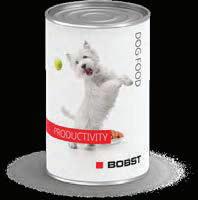



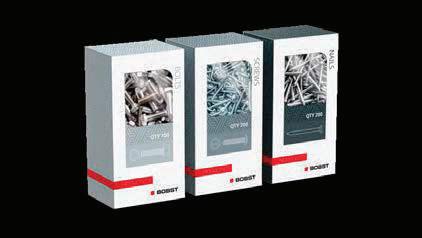





Sustainability report 2022 Bobst Group SA ˍ
Water pollution, depletion of natural resources, climate change: we are degrading and putting pressure on our environment so fast that the lives and homes of millions of people across the globe are at stake. It is everybody’s responsibility to act NOW to improve the situation. The private sector has a critical role to play in mitigating environmental damage and in proposing solutions. BOBST, as one of the world’s leading suppliers of substrate processing, printing and converting equipment and services for the label, flexible packaging, folding carton and corrugated board industries, takes the future of humanity at heart and is now implementing actions to address sustainability issues. These initiatives may be a drop in the ocean of the global problem, but this is our responsibility to undertake them for the sake of a better world.

2
Bobst Group SA

Editorial 4 BOBST is committed to help solve global 4 issues Strategy 6 Our vision 8 Sustainability strategy 9 Materiality assessment 10 Stakeholder engagement 14 United Nations’ sustainable 16 development goals Operations reporting 18 Climate change 19 Energy 23 Water & waste 25 Occupational health & safety 30 Women & youth, diversity & 37 equal opportunity Innovation 42 Procurement & supply chain 44 Business ethics 46 Digitalization & data management 49 Talent attraction & satisfaction 52 Equipment reporting 54 Machinery energy consumption 55 Extending the life of BOBST machines 57 Machine safety for the user 59 Packaging use & 62 end-of-life reporting Environmentally improved packaging 63 TCFD 68 Task Force on Climate-related Financial 69 Disclosures (TCFD) GRI index 71 GRI index 72 Content Bobst Group SA 3
BOBST is committed to helping solve the climate issues
With the release of this sustainability report, Bobst Group is proud to share its progress toward its sustainability goals.
We recognize the importance of environmental and social responsibility in all aspects of our operations from the supply chain to our manufacturing processes. Sustainability is not just a word, it has become part of our lives, whether we like it or not. Our business decisions should be carefully considered as they have sometimes unexpected consequences for the planet. We remain committed to reducing our impact on the planet, respecting nature and people, while also creating long-term value for our stakeholders. Over 2022, we made significant strides by reporting on three additional material topics – Water & waste, Energy, Talent attraction & satisfaction – and climate-related financial reporting in line with the recommendations of the Task Force on Climate-related Financial Disclosures (TCFD). Today our sustainability scope includes
considerable actions, but we are only at the beginning of the journey. Whether it’s calculating the carbon footprint of our machines, creating an equitable and good environment in the company, committing to offer equal working opportunities and remuneration to employees for equal responsibilities throughout the Group, encouraging the development of young talents in management, or promoting family welfare, BOBST is committed to sustainability throughout its operations and beyond. Success is based not only on good products but also on the ethical behavior of our employees: by fostering our core values and establishing a strong company culture we encourage our employees to act with integrity, accountability and respect throughout our operations. Our core values of Passion, Respect, Performance and Trust are embedded in our business and guide our decisions and actions. We firmly believe that our commitment to sustainability will bear fruit in the long run, leading to increased brand reputation and attractiveness as an employer.
Sustainability report 2022
> Strategy
> Operations reporting
> Equipment reporting
> Packaging use & end-of-life reporting
> TCFD
> GRI index
Editorial
“BOBST is actively shaping a sustainable world for packaging”
Bobst Group SA 4
Sustainability report 2022
> Strategy
> Operations reporting
> Equipment reporting
> Packaging use & end-of-life reportinge
> TCFD


> GRI index
While BOBST stays a small group compared to the largest multinationals, reducing the environmental impact of packaging throughout its life cycle is a challenge we are determined to take on.
Our commitment matters, and we recognize our responsibility to contribute to solving global sustainability issues. The Board of Directors works hand in hand with the Group Executive Committee (GEC) on sustainable development.
The recent environmental and energy crisis have shown us that a financial report alone does not fully reflect the consequences, risks, and costs of running a company.
BOBST’s commitment to the Environmental, Social, and Governance (ESG) standards is driving positive change and shaping a sustainable future for both the packaging industry and the world.
 Alain Guttmann Chairman of the Board
Jean-Pascal Bobst Chief Executive Officer
Alain Guttmann Chairman of the Board
Jean-Pascal Bobst Chief Executive Officer
Editorial
Strategy
Sustainability report 2022

>Strategy
> Operations reporting
> Equipment reporting
> Packaging use & end-of-life reporting
> TCFD
> GRI index
Sustainability has taken a consistent and important place in BOBST’s strategy and actions. With the three pillars defined in its strategy – operations, equipment, packaging use & end-of-life – BOBST is committed to make progress in this field with relevant business indicators.
Innovations that will change the way packaging is produced, together with mixed teams, are at the heart of all BOBST’s sustainability efforts with, amongst others, reduction of waste, an increase of efficiencies, compliance with the latest regulations, and the development of environmentally improved flexible packaging solutions.


We are shaping the future of the packaging world, and we do our utmost to help the packaging sector to deliver better quality, efficiency, control, in a sustainable manner at a time when these qualities have never been more important.

Bobst Group SA 6






Converters BOBST Brand owners Brand owners’ needs Time to market Fast turnaround time More sustainable packaging Cost Quality Efficiency Control
Sustainability
needs Automation Connectivity Sustainability Digitalization Equipment, services and a wide range of solutions for the packaging industry Strategy Bobst Group SA 7 Sustainability report 2022 >Strategy > Operations reporting > Equipment reporting > Packaging use & end-of-life reporting > TCFD > GRI index
Proximity
Converter
Our vision
We have set out to shape the future of the packaging world by actively driving the industry transformation: from a mechanical to a digital world, and from manufacturing machines to process solutions along the entire workflow.
>Strategy
> Operations reporting

> Equipment reporting

> Packaging use & end-of-life reporting



> TCFD

> GRI index
Four industries served

BOBST serves four industries with innovative packaging and label solutions:
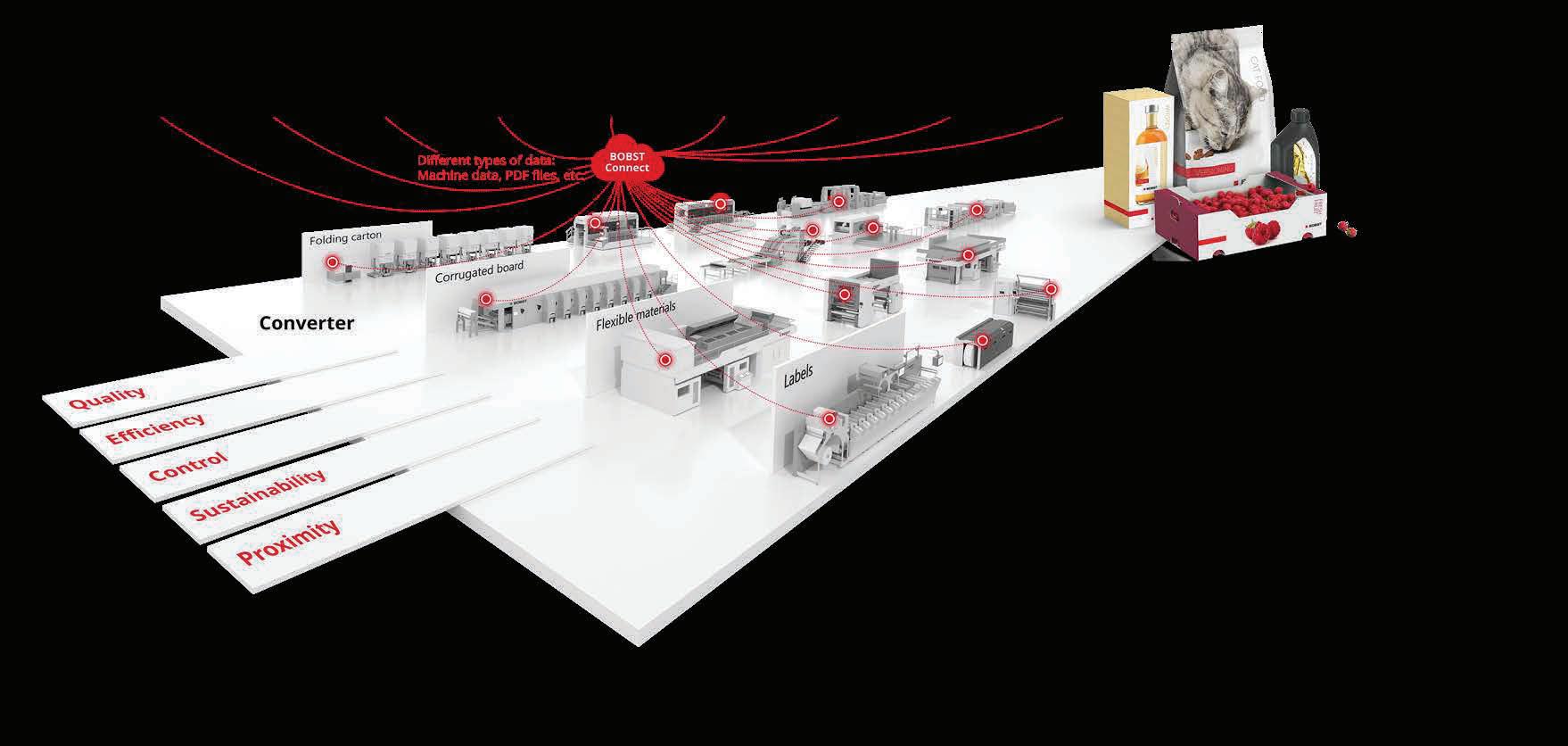
– Labels

– Flexible packaging
– Folding carton

– Corrugated board

Brand owner DesignerPre-press Workflow solutions Supplier of substrate, tooling, ink and services
Converting partner Packer Consumer e-tailer/ retailer Our vision ˍ
Equipment
Connectivity Digitalization Automation Sustainability Bobst Group SA 8
Empowering the future
Sustainability report 2022
Anticipating change
Materiality assessment motivated the articulation of BOBST’s sustainability strategy into three streams. Each stream brings together a dedicated team under the coordination of a Head of stream. BOBST’s Head of corporate sustainability and a Steering Committee oversee their work.
>Strategy
>
>
>
>
>
BOBST operations
To provide work and life conditions within the company and along the supply chain, which are ethical, supportive, and respectful of the environment.
BOBST equipment

To reduce the environmental and social impact of future and existing packaging machines at the customer’s site with improvements on machine performance and new services.


Packaging use & end-of-life
To contribute with solutions in the value chain to generalize more sustainable packaging, which have minor environmental impact and a well-managed end-of-life. At BOBST we do almost all that is possible today to reduce the environmental footprint of packaging with pragmatic solutions and ongoing innovations.
Sustainability strategy
BOBST is committed to sustainability beyond its sole operations
ˍ
Bobst Group SA 9
report 2022
Sustainability
Operations
reporting
Equipment
reporting
Packaging
use & end-of-life reporting
TCFD
GRI
index
Prioritizing challenges
Materiality assessment is a methodology to identify which Environmental, Social, and Governance (ESG) issues are the most significant for an organization. BOBST’s materiality showed that the most significant topics address challenges at three different levels of the value chain: operations, equipment, and packaging use & end-of-life. This finding motivated the articulation of BOBST’s sustainability strategy into three streams.
BOBST’s materiality assessment
In 2020, BOBST conducted a materiality assessment for the first time. The process began with a thorough review of ESG challenges in the packaging industry, which led to a list of potentially relevant topics.
To prioritize these topics, focus groups and bilateral interviews were organized with key stakeholders, both internal and external, chosen to reflect the diversity of perspectives in BOBST’s ecosystem. In particular, the various functions, managerial levels, geographies, ages, and gender within the Group:
– More than 100 BOBST employees took place in face-to-face consultations, including amongst others: Local Entity Heads, Environmental Health & Safety (EHS) managers, HR representatives, R&D engineers, administrative functions, together with Group Executive Committee and Board of Directors members;
– In addition, 25 external key industry stakeholders were consulted, including brand owners, converters, associations, and others (e.g. partners).
Materiality matrix
The materiality matrix provided a visual representation of the issues that were prioritized according to their importance to the company’s stakeholders.
The result of BOBST’s materiality analysis shows the topics relevant to BOBST’s value chain based on the rankings given by the participants as represented in the materiality matrix (see graph on page 11).
Several sustainable issues are drawn from the Global Reporting Initiative (GRI) standards, and some are sector-specific topics not covered by the GRI standards but deemed to be of material importance by stakeholders.
>Strategy
> Operations reporting
> Equipment reporting
> Packaging use & end-of-life reporting
> TCFD
> GRI index
ˍ
Materiality assessment
Bobst Group SA 10
report 2022
Sustainability
Materiality assessment
Materiality matrix established in 2020
High priority topics, which must be addressed in the strategy, are those which are ranked high by internal and also external stakeholders.
29
30
31
32
33
>Strategy
> Operations reporting
> Equipment reporting
> Packaging use & end-of-life reporting
> TCFD
> GRI index
34
35
36
37
38
Significance for external stakeholders 3 1 0 4 2 5 0 3 1 4 2 5 Significance for internal stakeholders High significance Medium significance 13 09 19 39 32 31 25 26 27 23 22 35 37 A B C 07 14 16 04 10 18 05 06 11 38 36 03 01 02 08 12 21 29 30 C 17 24 28 A 15 20 33 34 B Detailed view Environment 01 Air pollution 02 Climate change 03 CO2 neutral machines 04 Design for recyclability 05 Eco-design 06 End-of-life of the machinery 07 Energy efficiency of the machinery 08 Energy in operations 09 Environmentally improved packaging 10 Extending the life of the machinery 11 Hazardous substances 12 Mobility 13 Packaging end-of-life 14 Plastic packaging 15 Plastic 16 Resource efficiency of the machinery 17 Responsible use of materials 18 Waste & circularity 19 Waste from the machine operation Social 20 Diversity & equal opportunity 21 Fair working conditions 22 Human rights
Labor relations
Local community engagement, charity & volunteering
Occupational health & safety
Machine safety
Woman & youth, training & empowering
Agility & resilience to changing market conditions
23
24
25
26
27
Governance 28
Business ethics
Client satisfaction
Digitalization
Innovation
Integration
in decision-taking
of nonfinancial information
process
Responsible
&
leadership
governance
Talent attraction
Machine productivity
Optimization
of the organization & operational excellence
Packaging
safety
39 Sustainable procurement & supply chain management
07 Bobst Group SA 11
Sustainability report 2022
Materiality assessment
Main findings of BOBST’s materiality analysis
The identified topics address challenges at three different levels of the BOBST value chain.
In quantitative footprint studies, such as the BOBST equipment life cycle assessments, it has become clear that the most significant sustainability impacts occur down the value chain at the customer sites and at end-of-life phase, where BOBST has little influence and leverage.
The three streams and their priority topics for the years 2022-2023
Priority topics for 2022-2023
BOBST operations
Climate change
Energy*
BOBST equipment
Machinery energy consumption
Extending the life of BOBST machines
(technically not a priority, but included in this report)
Water & waste* Machine safety for the user
Occupational health & safety
Women & youth, diversity & equal opportunity
Innovation
(technically not a priority, but included in this report)
Procurement & supply chain
Business ethics
Digitalization & data management
(technically not a priority, but included in this report)
Talent attraction & satisfaction*
Sustainability report 2022
>Strategy
> Operations reporting
> Equipment reporting
> Packaging use & end-of-life reporting
> TCFD
> GRI index
Packaging use & end-of-life
Environmentally improved packaging

(This is an umbrella topic that addresses the environmental footprint of packaging holistically throughout its life cycle. A main focus area is the EoL of packaging, in particular the design for recyclability of packaging. However, other EoL pathways, e.g. compostability and biodegradability, are also considered.)
Other important topics
Waste from the machinery
* New topics included in this report.
This report covers all BOBST branded local entities, which can be consulted in the annual report:
> https://investors.bobst.com/fileadmin/user_upload/Investors/Reports/Annual_Report_2022_EN.pdf
Bobst Group SA 12
Sustainability report 2022
>Strategy
> Operations reporting
> Equipment reporting
> Packaging use & end-of-life reporting
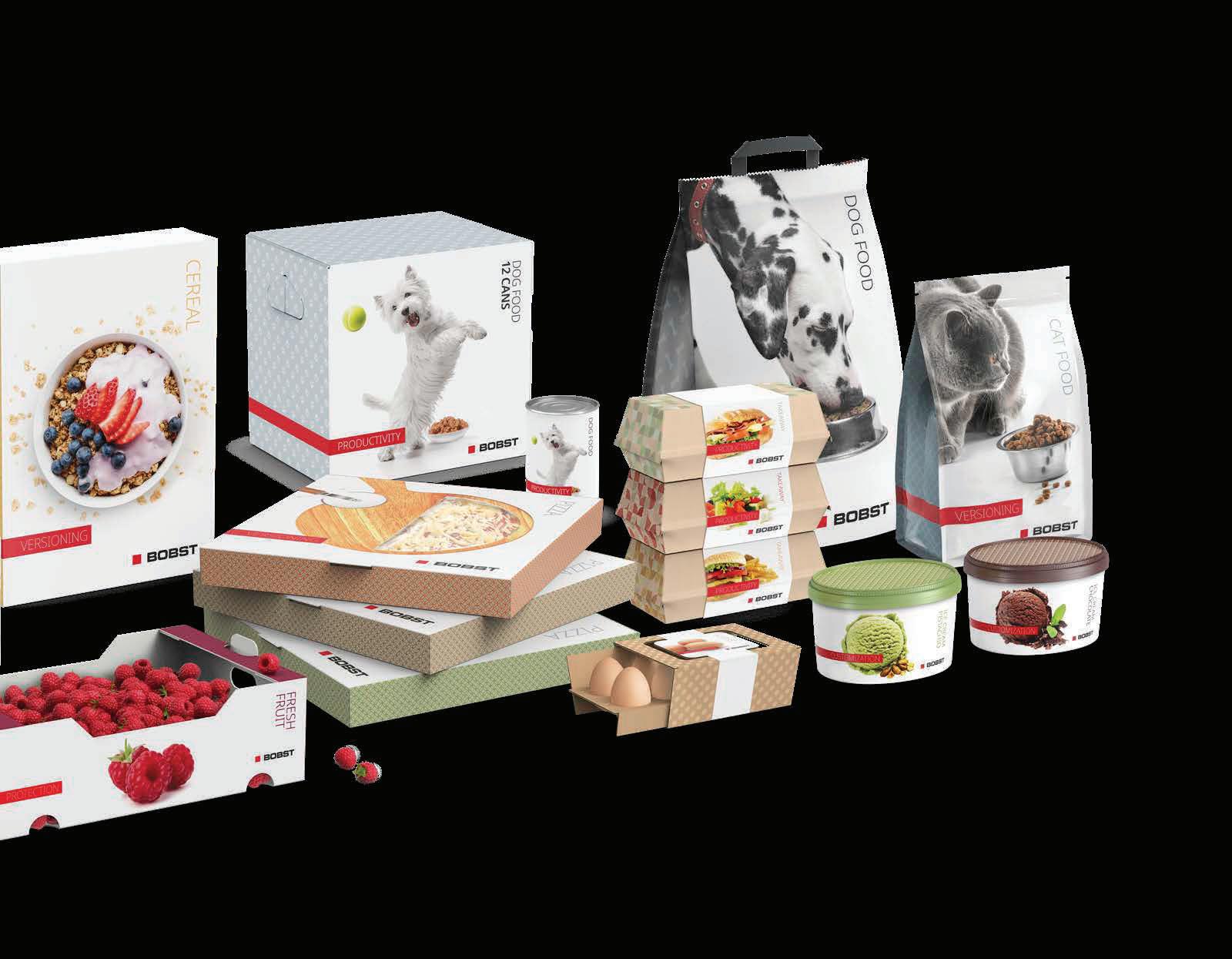
> TCFD
> GRI index
Materiality assessment
Group SA 13
The highest impact occurs downstream in the value chain, where BOBST has little leverage
Bobst
Stakeholder engagement
Stakeholders
Brand owners
Converters
Interaction with stakeholders
Personal contacts, Packaging Masterclass seminar, Personalized consultations about sustainability.
Personal contacts, Satisfaction survey, Virtual and in-person demonstrations, Personalized consultations about sustainability.
Associations, Partners Conferences, Partnerships, Personalized consultations about sustainability.
Suppliers, Folding carton, Corrugated board, Labels, Flexible packaging manufacturers
Regular correspondence, Personal contacts, Supply management, Personalized consultations about sustainability.
Issues and concerns
Communication about the possibilities offered by BOBST machines, Partnership of trust, To produce eco-friendly packaging.
Excellent after-sales service, Spare parts available quickly, Online assistance in case of production problems, Fast response times, reliable and highly productive products, Production of zero-fault packaging.
Environmental impact of packaging, Health and safety impact.
Price, Volumes, Specifications, Partnership.
Sustainability report 2022
>Strategy
> Operations reporting
> Equipment reporting
> Packaging use & end-of-life reporting
> TCFD
> GRI index
Competitors
Competitive intelligence.
Technology watch. Municipality, Political authorities Development plan, Specific events.
Compliance with laws and regulations, Tax contribution, Durability, Certifications.
Media, Financial Analysts
Shareholders, Investors, Families related to BOBST
Next Generation (young people from families connected to BOBST)
Annual report, Press releases, Press conferences.
Annual Report, sustainability report, annual profile, Press releases, General Assembly, Roadshows.
Regular sessions and workshops, Personalized consultations about sustainability.
Operating profit (EBIT), Strategy, Durability.
Long-term financial goals, Durability, Sustainability, Long-term success and corporate reputation.
Identify young leaders to ensure the succession, Opportunities to work at BOBST.
Board of Directors
Regular sessions, Personalized consultations about sustainability.
Good operation and sustainability of the company. Group Executive Committee, extended management team Regular sessions, Personalized consultations about sustainability.
Health and safety, Job security, Exchange of regular information, Workload,
Good operation and sustainability of the company. Employees Daily interactions, Staff meetings, Intranet communications, Training, Meetings with the Management and the Personnel Commission, Personalized consultations about sustainability.
Salary and other benefits, Training.
Stakeholder engagement
Bobst Group SA 14
Stakeholders
Interaction with stakeholders
Personnel Commission Meetings with Management, Meetings with staff.
Retirees Newsletters and regular events, Access to BOBST employee benefits.
Apprentices, Training Center
Universities of Applied Sciences
Neighborhood, Various audiences
Associations, charities
Ceremony for the presentation of certificates, Open house of the Training Center.
Issues and concerns
Salary negotiations and other employee benefits, Employee representation.
Benefit from attractive prices, Stay informed about BOBST activities.
Train young people in the mechanical and electrical engineering industries, Ensuring succession, To acquire, provide vocational training, education.
Trade shows, School visits. Find young leaders, Opportunities to work at BOBST.

Correspondence, Company visits.
To know the activities of BOBST, Good relationships.

Collection of donations within BOBST. Sponsorship.
Sustainability report 2022
>Strategy
> Operations reporting
> Equipment reporting
> Packaging use & end-of-life reporting
> TCFD
> GRI index
Stakeholder engagement
Bobst Group SA 15
Embracing global initiatives
Quality education
Ensure inclusive and equitable quality education and promote lifelong learning opportunities for all.

BOBST operations
Responsible consumption and production
Ensure sustainable consumption and production patterns.

Partnerships for the goals
Strengthen the means of implementation and revitalize the global partnership for sustainable development.
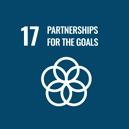
Climate action
Take urgent action to combat climate change and its impacts.
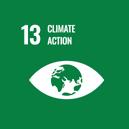
Gender equality
Achieve gender equality and empower all women and girls.
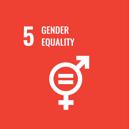
Decent work and economic growth

Promote sustained, inclusive and sustainable economic growth, full and productive employment and decent work for all.
Industry, innovation and infrastructure
Build resilient infrastructure, promote inclusive and sustainable industrialization and foster innovation.

Clean water and sanitation
Ensure availability and sustainable management of water and sanitation for all.

United Nations’ sustainable development goals
ˍ
Bobst Group SA 16
As a Group leader in the global industry, BOBST is committed to advancing environmental and societal solutions on a worldwide scale
United Nations’ sustainable development goals

Industry, innovation and infrastructure
Build resilient infrastructure, promote inclusive and sustainable industrialization and foster innovation.

Packaging use & end-of-life
Responsible consumption and production
Ensure sustainable consumption and production patterns.

Partnerships for the goals
Strengthen the means of implementation and revitalize the global partnership for sustainable development.
Decent work and economic growth

Promote sustained, inclusive and sustainable economic growth, full and productive employment and decent work for all.
Sustainability report 2022
>Strategy
> Operations reporting
> Equipment reporting
> Packaging use & end-of-life reporting
> TCFD > GRI index
Life on land
Protect, restore and promote sustainable use of terrestrial ecosystems, sustainably manage forests, combat desertification, halt and reverse land degradation and halt biodiversity loss.

BOBST’s initiatives support the objectives, within its reach, of the United Nations’ sustainable development program.
 BOBST equipment
BOBST equipment
Bobst Group SA 17
To provide work and life conditions within the company and along the supply chain, which are ethical, supportive and respectful of the environment.

Bobst Group SA 18 Sustainability report 2022 > Strategy >Operations reporting > Equipment reporting > Packaging use & end-of-life reporting > TCFD > GRI index
Operations reporting
Climate change
BOBST’s carbon footprint reduction to prevent climate change takes a high-priority position in the Group’s sustainability strategy. It is relevant for BOBST because the CO2 emissions of packaging production and consumption are considerable. Therefore, BOBST is committed to reducing the intake of energy and natural resources in all Group’s operations to decrease its carbon footprint.
Within the packaging industry, BOBST’s carbon footprint and impact on climate change occurs in several main areas.

The Group operates industrial sites, produces equipment, and ships machines and spare parts to its customers worldwide. All these activities consume energy (e.g. electricity and fuel) as well as natural resources (e.g. iron) and generate carbon emissions.
On the other end, the machinery sold by BOBST enables converters worldwide to produce packaging from a wide variety of substrates. However, their energy consumption is considerable and causes Greenhouse Gas (GHG) emissions.
BOBST carbon footprint breakdown
When BOBST’s activities are broken down according to the GHG protocol (see detailed figures on page 21), it turns out that the direct and energy-indirect emissions generated by the production of a
BOBST machine (scopes 1 and 2) represent only a half-percent share of its overall carbon footprint. The highest impact, 99.5% of GHG emissions, occurs up & downstream in the value chain (scope 3), where BOBST has little leverage. This result points out an inverse relationship between BOBST’s direct scope of action and the carbon footprint of packaging in general.
Sustainability report 2022
> Strategy
>Operations reporting
> Equipment reporting
> Packaging use & end-of-life reporting
> TCFD
> GRI index
Scope 3 upstream –indirect GHG
Procurement of raw materials, business travel, staff commuting, water and waste treatment, transport inbound.
Scope 1 – direct GHG related to BOBST’s operations
Fuel from owned and leased vehicles, emissions from burning fuels on BOBST sites (e.g. manufacturing and heating).
Scope 2 – indirect GHG
related
to BOBST’s
operations
Purchased electricity.
Scope 3 downstream –
indirect GHG
Energy consumed by the machines (sold in the report year) during their whole lifetime, transport outbound of machines and spare parts.
Upstream activities Reporting company Downstream activities Climate change Bobst Group SA 19
Most of BOBST’s GHG emissions occur at the customer’s premises
Accountable for 77.6% of total BOBST GHG emissions in 2022, BOBST machines in the use phase at the converters’ plants over their lifetime represent the most significant fraction of the carbon footprint of the Group. Two main reasons explain the importance of GHG emissions related to the equipment sold by BOBST. First, a packaging machine consumes energy while operating. Second, a BOBST machine is designed to last (15 to 30 years), and thanks to the maintenance programs and solutions provided by BOBST services the machines can function optimally and for a long time (see section Extending the life of BOBST machines page 57). As the carbon footprint of the Group’s activities is primarily concentrated in its downstream GHG emissions (scope 3), BOBST has a crucial role to play in the design and maintenance of its machines to lower their environmental impact during their lifetime, jointly with clients.
The Group is committed to the Science Based Targets initiative (SBTi), which supports companies setting GHG targets consistent with the Paris Agreement. The latter aims to limit global warming to well below 2°C compared to pre-industrial levels. As a result, BOBST is currently working to define reduction targets based on this methodology and will announce them in its sustainability report 2023. The Group is also in the process of implementing the recommendations of the Taskforce for Climate-Related Financial Disclosures (TCFD). The goal is to identify the most material climate-related risks and opportunities over different time horizons and to assess their potential impacts on the business to enable decision-useful, forward-looking information (see TCFD details below on page 69).
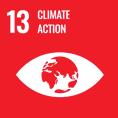
2022 carbon accounting of the Group’s activities
Since the publication of its first full GHG protocol aligned carbon accounting in 2021, BOBST has strived to improve the quality of the datasets and emission factors used. The figures presented here integrate these slight methodological changes, including recalculations of past emissions for better comparability (1). In the carbon accounting for 2022, all local entities for which the Group has operational control have been taken into account (except for Bieling & Petsche Stanzforme, Cito Group, Gordon, and Boxplan, which are entities that do not operate under the BOBST brand).
Sustainability report 2022
> Strategy
>Operations reporting
> Equipment reporting
> Packaging use & end-of-life reporting
> TCFD > GRI index
(1) Changes in 2021 (base year)
– Scope 3 – Machine use: Improvement of the data collection method and update of the electrical mix emission factor has a significant impact (-35% compared to the value in SR 2021);
– Scope 3 – Transportation: The emission factor for the transportation of machines sold by road has been updated (-19% compared to the value in SR 2021) with a minor impact on the total.
Changes in 2019
– Scope 3 – Machine use: Improvement of the data collection method and update of the electrical mix emission factor has a significant impact (-44% compared to the value in BOBST SR 2021);
– Scope 1 & 2 – The update of the emission factors followed minor changes in emission values.
Changes in 2019 and 2021
Business travel accounting for 2019 and 2021 was updated after identifying an aggregation error. However, this correction has a minor impact on the total emissions for both years.
Climate change
Bobst Group SA 20
Greenhouse gas emissions (GHG) – scopes 1 to 3 (in tonnes of CO2 equivalent)
BOBST’s scopes 1 and 2 have slightly increased since last year but have largely been counterbalanced by a decrease in scope 3. The latter was mainly due to a lower impact of the machine use phase due to product mix sales. In contrast, procurement and business travel emissions increased, mainly due to the end of Covid restrictions, especially in Asia.

Databases, tools, standards, and methodologies used in the calculation
All gases mandatory to be reported by the GHG protocol were included in the count, i.e. carbon dioxide, methane, HFCs, nitrous oxide, nitrogen trifluoride, perfluorocarbons, and sulfur hexafluoride.
Databases used: Ecoinvent 3.8, DEFRA 2021, and Exiobase Input-Output database.
The tool used: SIMAPro.
Method of impact calculation: IPCC 2021 GWP100.

Standard used: GHG protocol standard.
The methodology relies on the GHG protocol standard for scope 3 and a spend-based method for procurement. Other indirect (scope 3) GHG emissions categories and activities included in the calculation: procurement, energy upstream, waste, water, business travel, commute, distribution of machines, machine use, and distribution of spare parts.
Sustainability report 2022
> Strategy
>Operations reporting
> Equipment reporting
> Packaging use & end-of-life reporting
> TCFD
> GRI index
Climate change
2019 2021 2022 Variation 2021/2022 Scope tCO2 % (total scope 1,2,3) tCO2 % (total scope 1,2,3) tCO2 % (total scope 1,2,3) % Scope 1 (inc. scope 3.3 – Energy upstream) 9 175 0.3% 11 292 0.3% 11 549 0.3% 2% Scope 2 (inc. scope 3.3 – Energy upstream) 5 898 0.2% 6 748 0.2% 6 943 0.2% 3% Scope 3 3 002 772 99.5% 3 970 395 99.5% 3 803 292 99.5% -4% Scope 3 – Machine use 2 418 695 80.1% 3 301 028 82.8% 2 965 265 77.6% -10% Scope 3 – Procurement 548 477 18.2% 640 330 16.1% 807 545 21.1% 26% Socpe 3 – Commuting 13 662 0.5% 11 328 0.3% 8 575 0.2% -24% Scope 3 – Business travel 11 112 0.4% 3 751 0.1% 9 640 0.3% 157% Other scope 3 10 826 0.4% 13 957 0.3% 12 267 0.3% -12% Total 3 017 845 100.0% 3 988 435 100.0% 3 821 784 100.0% -4%
BOBST’s carbon footprint reduction to prevent climate change takes a high priority position
Bobst Group SA 21
Objectives for 2023
Bobst Group aims to pursue the reduction of its carbon footprint to prevent climate change. BOBST is committed to reducing its scope 1 and 2 emissions which are under the Group’s direct operational control (e.g. energy used in operations).

In 2023, BOBST is assessing decarbonization options for its operational activities in the SBTi submission target process framework.
Reduction of scope 3 emissions is more a long-term effort. Dedicated streams take up this task, mainly the stream equipment, since machines in use at BOBST customers’ plants are responsible, over their lifetime, for the majority of scope 3 emissions. Reducing emissions from BOBST machines remains a priority area for action (see Machinery energy consumption on page 55), and a reduction target for scope 3 is also in preparation for submission to SBTi.
Bobst Group shares climate change commitments and greenhouse gas (GHG) emissions results externally, through its sustainability report, and internally, to the relevant experts and working group in charge of defining the action plan for emissions reduction.

Sustainability report 2022
> Strategy
>Operations reporting
> Equipment reporting
> Packaging use & end-of-life reporting
> TCFD
> GRI index
Climate change
Bobst Group SA 22
Energy consumption is a key issue in BOBST’s sustainability strategy. In all the countries where the Group operates, it monitors and manages the consumption of the energy required for its industrial and service activities. BOBST makes energy savings where possible. It also invests in the infrastructure of its local entities to reduce their consumption or to enable them to produce renewable energy.
Within the framework of its operational activities, Bobst Group uses energy from renewable sources (solar photovoltaic), fossil fuels (methane, propane, diesel, fuel oil) or from the grid (electricity).
Energy shortage and soaring costs
Sustainability report 2022
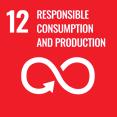
> Strategy
>Operations reporting
> Equipment reporting
> Packaging use & end-of-life reporting
> TCFD
> GRI index
Solar energy –
For local entities equipped with photovoltaic panels, the electricity produced is either used, in addition to the power purchased from local suppliers, or fed back into the public grid. Within the Bobst Group, the production of photovoltaic solar energy represents 11.6% of the total electricity consumption.
The global energy crisis and soaring electricity and fuel prices have a direct impact on the operating costs of BOBST’s production and service sites. In many of the countries where it operates, the Group must also comply with new government directives concerning the reduction of gas and electricity consumption by individuals and companies.
Non-renewable energy
–
At BOBST, fossil fuels are used to heat the premises, for certain production processes and for company vehicles used for business travel. In Switzerland, the Mex site has a fossil gas-fired combined heat and power system. This system not only contributes to the heating of the buildings, but also produces electricity that is consumed directly on site.
In terms of indirect energy consumption, the machines manufactured and sold by the Bobst Group use energy both upstream and downstream of the value chain (see breakdown of BOBST’s carbon footprint in the section Climate change on page 21).
Bobst Group has thus taken measures to limit the impact of these actions on its activities and costs and has also developed crisis scenarios in case of shortage:
– Analysis of gas and electricity needs of seven of its European production sites;
– Installation of adapted generators at six European production sites to prevent possible load shedding or power cuts. There was no need to use this equipment in 2022.
At the same time, the energy supply contracts were reviewed.
Energy
Bobst Group SA 23
Energy
Sustainable energy management
BOBST follows the commitments of the Charter of Bobst Group policy with regard to health, safety at work and environmental protection to define the axes of its energy management policy and the reduction of its environmental impact (see carbon footprint in the section Climate change on page 21). All over the world, projects and initiatives are underway. In Europe, BOBST is studying and investing in several projects to increase and diversify its production of renewable energy, to reduce the use of fossil fuels and the Group’s dependence on the

Energy consumed by the Bobst Group in 2022
All energy sources combined, the total consumption of BOBST’s operational activities in 2022 is equivalent to 66 530 MWh.
During the same period, the Group’s sites equipped with solar photovoltaic installations produced 4 895 MWh, of which 168 MWh were sold/reinjected into the public grid.

>
The figures in this table are taken from the Group’s carbon footprint databases (see Climate change section page 21) and have been processed according to Conversion factors from DEFRA 2021
>
Energy
Energy consumption from BOBST’ vehicles fleet Electrical consumption for facilities Diesel 12 757 MWh 24 035 MWh (Fuel source depends on the electric mix from the country) Oil 5 734 MWh Electrical 26 MWh -> from the grid Total 18 517 MWh Total 24 035 MWh Percentage of overall energy Percentage of overall energy consumed 29.37% Percentage of overall energy consumed 32.58%
Bobst Group SA 24
report 2022
Strategy >Operations
Equipment
Sustainability
>
reporting >
reporting
Packaging
& end-of-life
use
reporting
TCFD
GRI index
>
Sustainability report 2022

> Strategy
Water & waste
As a manufacturer of packaging equipment, BOBST uses water and raw materials (metals, paper and plastic) in its operations. Its industrial and service activities have a direct impact on water resources and generate waste. To limit its environmental footprint, the Group is working to reduce the quantity of its waste, to improve recycling (currently reaching 75%) and to limit its water consumption.
The activities of the Bobst Group generate several types of waste that are subject to recycling. These are mainly metal residues linked to machining operations, but also paper and cardboard, and plastics used for packaging and transport of machines as well as for shipping spare parts to the Group’s customers throughout the world.
Common industrial waste
Depending on the country where the Group operates, local waste management systems dispose of the waste through two different methods: landfilling, and incineration.
Special waste
The construction of packaging machines requires the use of lubricants or coolants (oils or emulsions) as well as chemicals (paints, varnishes, inks, cleaning and degreasing solutions). All residues of these industrial substances are collected separately and treated by specialized companies.
Organic waste
At all BOBST production sites, the packaging of components, modules and machines contains wood that the Group’s sites must eliminate. Two ways are used: recycling or thermal recovery depending on the country.
In accordance with the Charter of Bobst Group policy with regard to health, safety at work and environmental protection (see https:// investors.bobst.com/fileadmin/user_upload/About_us/Documents/ EHS_Policy_2020_EN.pdf), all BOBST production sites have a waste sorting concept that complies with the requirements of the countries where they operate and with the capacities of local recycling channels. The treatment of a part of the waste also has an economic interest, such as the recycling of metals whose resale offers a source of profit.
The Group has set up an annual monitoring of the quantities of waste treated (see table on page 26), and this will be part of local sites’ objective settings.
>Operations reporting
> Equipment reporting
> Packaging use & end-of-life reporting
> TCFD
> GRI index
Water & waste
Bobst Group SA 25
* Data on the quantity of waste is provided by the specialized companies mandated by BOBST for its treatment or recycling. These data are compiled at the various sites before being consolidated at Group level. As regards the service entities, most of them operate in rented commercial premises, the volume of waste from which remains unknown, since its disposal is included in the rental price. However, as their waste is typical of office activities, no extrapolation has been made.
Water consumption related to BOBST activities
The Group’s organization is based on two business units: the Business Unit Printing & Converting (BUPC), which is responsible for the manufacture of packaging machines, and the Business Unit Services & Performance (BUSP), which is in charge of services and of machine overhauling provided to customers. Taken as a whole, BOBST’s operational activities have a limited impact on water resources. Its consumption within the Group mainly concerns three activities:
Industrial use
– Preparation of emulsions circulating in closed circuit in its machining centers;
– Degreasing of parts in open or closed circuit installations depending on their size and type;
– Aqueous baths in a closed circuit in the paint line at the Mex site (Switzerland) for surface preparation (16 m3), whose water is replaced once a year on average.
Watering, sanitary facilities and cleaning
For the rest, water consumption is limited to the use of sanitary facilities, cleaning of the premises and watering of the outdoor facilities. At the Mex site, the vegetable garden where employees buy organic vegetables is equipped with a drip irrigation system that is taken into account in the site’s water consumption.
Water quality and management
Present in more than 50 countries around the world, the Bobst Group uses water of variable quality. For example, in Southeast Asia (Malaysia, Indonesia, Thailand and Vietnam), mineral water is preferred as drinking water. To prevent any risk to the health of its employees, the water supplied by the local services is only used in the sanitary facilities and for cleaning.
Sustainability report 2022

> Strategy
>Operations reporting
> Equipment reporting
> Packaging use & end-of-life reporting
> TCFD
> GRI index
As for waste, BOBST relies on its Charter policy with regard to health, safety at work and environmental protection (see https://investors. bobst.com/fileadmin/user_upload/About_us/Documents/EHS_ Policy_2020_EN.pdf) to limit its impact on water resources.
Water & waste
Waste related to the Bobst Group's operational activities Quantity (tons)* In % Metal 1 368 30 Cardboard, paper 408 9 PET, PVC, other plastics 246 5 Special / hazardous waste (chemicals) 572 13 Urban waste 531 12 Wood 1 382 30 Other 43 1 Total 4 549 100 Recyclable waste in percent 75%
Bobst Group SA 26
(1) The premises occupied by the services entities are rented. For four of the Group’s 19 entities, the owners are not able to provide the water consumption related to the surfaces in question. In these cases, the data has been extrapolated by calculating the average annual consumption per person on the sites where consumption is known. The value obtained was multiplied by the number of employees at the four sites where water consumption is not known. For the production sites, which are owned by BOBST, the local water authorities provide the consumption data.
(2) Carried out on the basis of data provided by the “Aqueduct Water Risk Atlas” (https://www.wri.org).
(3) Surface water: water that occurs naturally on the earth’s surface in ice sheets, ice caps, glaciers, icebergs, bogs, pounds, lakes, rivers and, streams.
(4) Groundwater: water that is being held in, and that can be recovered from, an uderground formation.
Several Group sites are equipped with water consumption reduction devices: waterless urinals – Bobst Mex SA (Switzerland) – rainwater recovery systems – Bobst Lyon (France), Bobst India (India), Bobst Mex SA (Switzerland), Bobst Italia (Italy) – as well as push-button or motion detection taps. A monitoring system for water consumption is in place at the production sites, allowing the manual detection of cases of over-consumption.
Sustainability report 2022

> Strategy
>Operations reporting
> Equipment reporting
> Packaging use & end-of-life reporting
> TCFD
> GRI index
Water & waste
Water consumption (1) Water withdrawal by source All areas (metric tonnes) Areas with water stress (2) (metric tonnes) Remark Surface water (total) (3) Freshwater (<= 1 000 mg/l total dissolved solids) 47 468 17 664 Other water (< 1 000 mg/l total dissolved solids) 14 659 3 609 Rain water harvesting for WC and gardening Ground water (total) (4) Freshwater (<= 1 000 mg/l total dissolved solids) 33’6 33 623 16 644 Other water (< 1 000 mg/l total dissolved solids) 0 0 Mix of ground and surface water For three sites, the water supplied can come either from surface or ground water Freshwater (<= 1 000 mg/l total dissolved solids) 872 180 Other water (< 1 000 mg/l total dissolved solids) 0 0 Total third-party water withdrawal in water stress areas Surface water X 21 273 Ground water X 16 644 Mix of ground and surface water X 180 Total water withdrawal 96 622 38 097
Bobst Group SA 27
For the first time, BOBST is sharing data on the Group’s water consumption, according to the requirements of GRI303 for thirty local Group entities (production and services). In the past, only the water consumption of local production entities was taken into account. However, the latter represents 95% of the Group’s total consumption. Taking data from the past five years, the evolution of water consumption at production sites is changing as follows:
In the future, an annual comparison will be set up for all local entities (production and services).
Sustainability report 2022

> Strategy
>Operations reporting
> Equipment reporting
> Packaging use & end-of-life reporting
> TCFD
> GRI index
Water & waste
Water consumption (m3 per person) 17.5 18 18.5 19 19.5 20 20.5 21 2018201920202021 2022 20.620.819.820.3 18.8
Bobst Group SA 28
In the future, an annual comparison will be set up for all local entities (production and services)
Sustainability report 2022

> Strategy
>Operations reporting
> Equipment reporting
> Packaging use & end-of-life reporting
> TCFD > GRI index
(1) The analysis of water stress, which characterizes a situation of water scarcity or a demand for water that exceeds available resources, was carried out on the basis of data provided by the “Aqueduct Water Risk Atlas” (https://www.wri.org). The latter defines water stress as follows: a measure of the ratio between total water withdrawals and the renewable reserves of surface and groundwater available. Water withdrawals include domestic, industrial, agricultural (irrigation) and animal husbandry uses with or without consumption. Available renewable water reserves take into account the impact of upstream water users and large dams on downstream water availability. Higher values indicate greater competition among users. Source: WRI Aqueduct 2019.
BOBST conducted a water stress assessment of each of its local entities. Areas that are rated as “high” or “extremely high” in the Aqueduct Water Risk Atlas were included in the “water-stressed areas” category. Eleven of the thirty sites evaluated are in a “high” or “extremely high” water stress area.
(2) Legend:
BAM: Bobst Africa & Middle East Ltd, Tunis, Tunisia.
BCL: Bobst (Changzhou) Ltd, Changzhou, China.

BES: Bobst Iberica S.L., Barcelona, Spain.
BFL: Bobst Firenze srl, Capalle-Campi Bisenzio, Italy.
BIN: Bobst India Private Ltd, Pune, India.
BIS: Bobst Istanbul Packaging JSC, Istanbul, Turkey.
BLN: Bobst Latino América Norte SA de CV, Mexico D.F., Mexico.
BNA: Bobst North America Inc, Roseland, USA.
BPL: Bobst Polska Sp. Z o.o., Łódź, Poland.
BSL: Bobst (Shanghai) Ltd, Shanghai, China.
FKG: Bobst Bielefeld GmbH, Bielefeld, Germany.
Water & waste Local entities in areas of water stress (1) Water withdrawal (clause 2.2.1) High risk Extremely high risk Facilities in areas with water stress (2) BCL BES BNA BPL BSL FKG BAMBFL BIN BIS BLN Total Surface water [m3] 4 604 44 12783 65 3609168 21 273 Ground water [m3] 1608223 6761 17446308 16 644 Mix of ground and surface water [m3] 180180
Bobst Group SA 29
Occupational health & safety
With more than 6 100 people operating worldwide in over 50 different countries, BOBST manufacturing activities for the packaging industry and equipment maintenance at the customers’ sites are subject to hazards and risks. To prevent or mitigate dangers that can negatively impact the health and safety of its employees and the machines’ users, the Group applies internationally recognized standards in the security field that meet its own needs, as well as local legal requirements.
For BOBST, its employees’ physical and moral integrity in all their professional activities is an absolute priority. It is a prerequisite for the smooth running of its business, its employer reputation, and achieving its objectives in terms of sustainable development. Bobst Group defines, in a dedicated charter, (see https://investors.bobst.com/ fileadmin/user_upload/About_us/Documents/EHS_Policy_2020_EN. pdf ), the framework and policy for its actions in the field of safety, health at work, and environmental protection. Management recognizes its responsibility in these areas and treats them with the same consideration as economic matters. To achieve its commitments, BOBST relies on integrated management systems, with respect to the legal requirements of the countries where its local entities are located, and involves its employees in its thinking.
Charter implementation
Thirty local entities of Bobst Group have been evaluated, divided into eleven production sites and nineteen service centers. Each local entity deploys the charter within its organization using its resources. Whether it is a production site or a service center, its approach and occupational health & safety (OHS) resources are different. Production sites employ specialists and OHS management systems. The organization and structure of service centers vary according to their size. But in both cases, they all comply at least with the local safety at work legal requirements. The BOBST SR 2021 highlighted significant differences within the Group in the level of OHS maturity. Bobst Group OHS maturity level will be improved by developing and gradually implementing a harmonized and appropriate OHS framework by the end of 2025 (see 2022 accomplishments on pages 35-36).
Sustainability report 2022
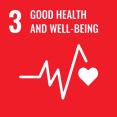
> Strategy
>Operations reporting
> Equipment reporting
> Packaging use & end-of-life reporting
> TCFD
> GRI index
Occupational health & safety
Bobst Group SA 30
Throughout the Bobst Group, more than 6 100 employees, thus 91.6% (1) of the workforce (i.e. employees and temporary workers) are already covered by a certified OHS management system: 53.4% of them according to the ISO 45001 standard by accredited bodies and 38.2% after OHS systems complying to local legal requirements. The scope and level of safety measures are proportionate to the risks incurred by employees and meet local legal requirements everywhere.
BOBST pursues an international industrial strategy and owns manufacturing sites in Asia, South America, India, and Europe. Production sites at Grenchen and Mex (Switzerland), Changzhou (China), San Giorgio Monferrato (Italy), and Lyon (France) have adopted the ISO 45001 OHS management system. Each possesses its own organization and specialists to implement it. Regarding the service centers, they all meet the legal requirements of the countries where they operate. In addition, all employees, trainees, temporary workers, and external companies working on these sites are integrated into their management systems.
Identification of hazards, risk assessment and investigation of adverse events
The objective of the risk reduction principle is to put in place measures to eliminate or isolate hazardous situations. Their identification, the training of employees, and the distribution of personal protective equipment are applied in all Bobst Group production sites (see https:// investors.bobst.com/fileadmin/user_upload/About_us/Documents/ EHS_Policy_2020_EN.pdf ). Employees can use their right to withdraw from a dangerous situation at any time according to the processes and legislation in force.
BOBST carries out a risk analysis of workstations following local legal requirements or the ISO 45001 standard, conducted by OHS specialists and based on the knowledge of employees and managers. Each production entity has its own process for identifying hazardous situations.
Sustainability report 2022

> Strategy
>Operations reporting
> Equipment reporting
> Packaging use & end-of-life reporting
> TCFD
> GRI index
(1) The remaining BOBST workforce, thus 8.4%, is covered by at least the local legal requirements but without a dedicated management system. That means the local entities deal with safety issues on a case-by-case basis according to legal requirements without a management system.
Occupational health & safety
Bobst Group SA 31
Corrective approach
Every accident is investigated to determine the root causes. The investigation is carried out by trained and qualified agents collaborating with employees and managers. Its conclusions include corrective measures and action plans. Although disparities exist between the various service entities, their risk analysis, accident investigation, and employee participation processes are similar to those of the productive entities. In ISO 45001 certified sites, audits and internal controls are performed regularly to ensure the follow-up and implementation of preventive and corrective measures. In addition, a management review is conducted annually.
Work health services
Except for Manchester (United Kingdom), each production site has OHS engineers trained to assess and reduce occupational health risks. The sites at Mex (Switzerland), Lyon (France), Pune (India), San Giorgio Monferrato, and Firenze (Italy), as well as Changzhou (China), rely mainly on occupational physicians or specialist nurses to deal specifically with occupational health issues. Whether provided by in-house staff or independent consultants, OHS services are subject to quality audits in all ISO 45001-certified production sites. In France, Italy, and Switzerland, the production site’s health, safety, and environmental services provide support and expertise to the local service entities. In the few entities with no occupational health & safety specialists, incidents are managed on a case-by-case basis.
Employee participation, consultation and communication on health & safety at work

All production sites and some service entities (France, Italy, United Kingdom, Scandinavia, North Latin America, Poland, Russia, and Spain) have an OHS Committee or Commission with Employee Representatives. In Mex (Switzerland) and San Giorgio Monferrato (Italy), there is also a procedure for employees to put forward their ideas or expertise to reduce the risk of accidents or improve health at work.
> Strategy
>Operations reporting
> Equipment reporting
> Packaging use & end-of-life reporting

> TCFD
> GRI index
Occupational health & safety
Bobst Group SA 32
report 2022
For BOBST, its employees’ physical and moral integrity in all their professional activities is an absolute priority
Sustainability
When local entities do not have an ad hoc committee, as at BOBST in the United States, they set up a process enabling their employees to take part in improving working conditions and reducing risks. Where no procedure is defined, employee suggestions go up through reporting channels.
Committee proposals, as well as individual suggestions, are evaluated by the OHS specialists for integration into continuous improvement programs. The process also foresees that each local entity takes the necessary investments into account in its financial planning. Commissions use the Intranet, billboards, or internal publications to inform staff. Employees’ participation and suggestions bring the management systems of the Group’s various sites to life.
At Mex, the Health, Hygiene, Safety at Work, and Environment Committee meets quarterly. Its members are representatives of the staff, production, services, an occupational physician, and occupational health and safety specialists. It deals with cross-functional improvement projects regarding safety, health, and the environment and serves as a communication channel between employees and management. The site management receives the minutes, and decisions follow the usual decision-making channels.
Health & safety training for employees
In the area of health & safety at work training, the Group’s local entities have qualified and accredited personnel or commission external specialists. In Switzerland and Italy, the follow-up of employee training is ensured with learning management systems (LMS).
BOBST offers generic programs, such as Environmental Health & Safety (EHS) training courses for new employees or fire alarm and evacuation drills. In addition, in its production sites and service entities, the Group provides specific training for risky activities (see 2022 accomplishments on pages 35-36).

Product lines for folder-gluers and die-cutters have developed a comprehensive training program for their technicians that incorporates safety instructions during machine installation and troubleshooting. For the few service entities that do not yet have a defined training program, support in this area is planned to improve the skills of their personnel.
> Strategy
>Operations reporting
> Equipment reporting
> Packaging use & end-of-life reporting
> TCFD
> GRI index
Occupational health & safety
Bobst Group SA 33 Sustainability report 2022
In 53% of its sites, BOBST can offer healthcare access beyond the legal framework
Promotion of employee health
In several local entities, BOBST organizes vaccination campaigns for its employees and provides them with sports clubs or extra-professional activities, as in Mex (Switzerland), Lyon (France), Shanghai, and Changzhou (China). Health benefits for non-work activities depend on local legislation. In 53% of its sites, representing 80% of employees,, BOBST can offer healthcare access beyond the legal framework.
Impact of occupational health & safety prevention on business relationships

Several local service entities already use prevention plans for the health & safety of their field service technicians during the installation, maintenance, or repair of machines. These programs comply with the legal framework of the countries in which they operate and each customer’s specific requirements. They include a risk analysis and a detailed description of the roles and responsibilities of the parties involved. Machines’ pre-installation visits regulate the process and the health & safety aspects. To reduce OHS maturity gaps pointed out in BOBST SR 2021, the Group took action (see 2022 accomplishments on pages 35). As for the use of BOBST products by its business partners, the Group’s strategy is based on four axes: establishment of a safety community by product line; maintenance of a high level of expertise; perfect knowledge of standards, as well as regular updating of skills (see section Machine safety for the user on page 59).
Workplace accidents in 2022
Most BOBST staff work in the Group’s production sites, building packaging machines. These manufacturing operations involve extensive handling, manual activities, and machine tools, exposing the workforce to potential sources of accidents. Statistically, the most frequently injured body parts in the workshops are the fingers, hands, and eyes. The main hazards identified that can lead to major injuries are lifting loads, working at heights, using handling equipment (forklifts and pallet trucks), moving mechanical parts, and working near live parts.
In 2022, the Bobst Group’s local production and service entities recorded no severe accidents involving temporary staff and only one work-related accident with serious consequences among its employees as the result of a fall from height (work from height). Accidents with work-related injuries involved 130 Group employees (99 in 2021) and 34 temporary employees (22 in 2021).
Preventive measures (resulting from hazard risk analyses at the workstations, internal audits, controls, or feedback from employees) or corrective measures (resulting from accident investigations) are listed in action plans, such as making work at heights safer by using appropriate protective equipment (lifelines and harnesses, lifting platforms, secure platforms). In addition, occupational safety specialists in various entities regularly monitor their implementation.
> Strategy
>Operations reporting
> Equipment reporting
> Packaging use & end-of-life reporting
> TCFD
> GRI index
Occupational health & safety
Bobst Group SA 34
Sustainability report 2022
Number of hours worked by BOBST employees: 10 882 859 hours.
Number of hours performed by temporary staff employed by BOBST: 1 167 549 hours. Each entity annually reports the number of employees, temporary staff, and trainees. The data is then consolidated at the Group level to calculate the various KPIs. The worked hours are calculated for each entity by multiplying the weekly contractual hours by the number of weeks per year (52) and by the number of full-time equivalents (FTE).
Objectives are set by the local management teams of production sites regarding accident frequency rate. For example, Bobst Mex (Switzerland) and Bobst Lyon (France), representing more than 40% of the Bobst Group workforce, planned the following objectives between 2021 and 2022:
– Bobst Mex: 10% reduction of the accident frequency rate;
– Bobst Lyon: stabilization of the accident frequency rate.
A common approach on a harmonized accident frequency rate objectives setting is one of the topics to be addressed within the Bobst Group EHS specialists network which will be launched in 2023.
2022 accomplishments
The Group EHS (Environmental Health & Safety) Lead function was created to conduct gap and risk analysis to level down the differences in maturity that BOBST SR 2021 highlighted within the production sites and the Service and Performance Business Unit (BUSP) as well as to meet the need for harmonization in occupational health & safety and better exchange throughout the Group.
Objectives for 2023
– A checklist was launched to assess gaps between local entities after GRI and ISO 45001 standards and will be completed in the first half of 2023;
– A guideline based on the requirements of GRI 403 has been developed to ensure an identical approach at all Group sites (production plants and service entities), with each BOBST entity being responsible for collecting the data required for the annual sustainability report. The data is then consolidated at the Group level to calculate the various KPIs;
– A dedicated EHS resource has been appointed within the Group to define a common framework and reliable indicators and promote the exchange of best practices in EHS using existing communication tools. Relevant best practices will be made available to service entities. In 2023, the effectiveness of these exchanges will be assessed by introducing evaluations specific to the EHS field during internal audits carried out by Corporate Audit.
Sustainability report 2022

> Strategy
>Operations reporting
> Equipment reporting
> Packaging use & end-of-life reporting
> TCFD
> GRI index
Occupational health & safety Accident frequency in 2021 and 2022 Frequency of accidents 200 000 hours worked 2021 2022 Category of personnel concerned by work-related accidents 0.02 0.02 Frequency rate of accidents at work with serious consequences among BOBST employees 0.64 0 Frequency rate of accidents at work with serious consequences among temporary staff employed by BOBST 3.05 2.39 Frequency rate of accidents with injuries among BOBST employees 4.71 5.82 Injury frequency rate for temporary staff employed by BOBST 2.23 2.74 Injury frequency rate for BOBST employees and temporary staff employed by the Group
Bobst Group SA 35
Health & safety training for employees – Bobst Group’s different entities set up more than 15 100 hours of training on specific risky activities (working at heights; risks related to electricity; material handling machines; lifting loads; use of chemical products; traffic safety; first aid; use of fire extinguishers). Already 2 988 employees and temporary staff attended these courses.

Impact of occupational health & safety prevention on business relationships – BOBST conducted a gap analysis to identify the needs and expectations of its various product lines (PLs) and service entities. It highlighted areas for improvement, such as implementing a dynamic reporting process and developing synergies between the different PLs and service entities regarding best practices, training, and administrative follow-up of EHS aspects based on local regulatory requirements and customer needs. To achieve these goals, BOBST will rely on a network of contact persons coordinated by the Group’s EHS lead, who took office on 1 January 2023.
Workplace accidents – The method of calculating hours worked has been harmonized for the entire Group, and the 2022 Accident Frequency figures meet GRI disclosure 403-9 requirements.

Occupational health & safety
Bobst Group SA 36 Sustainability report 2022 > Strategy >Operations reporting > Equipment reporting > Packaging use & end-of-life reporting > TCFD > GRI index
Bobst Group entities set up more than 15 100 hours of training on specific risky activities
Sustainability
Social mission statement
From our earliest days, our company’s foundation has been built on our core values. They inspire the leadership behaviors and principles which guide us and make us distinct and unique in all our actions. We operate our business in a socially responsible and ethical manner. We treat people as we would like to be treated and we strictly respect rules, laws and the environment wherever we operate.
People: Women & youth, diversity & equal opportunity
Ensuring equality and diversity in the workforce is an essential success factor for BOBST’s sustainable development. The Group fosters transparent corporate management, intergenerational communication, and the promotion of tomorrow’s young talents in all local entities to strengthen its employees’ loyalty and employer brand attractivity.

BOBST wishes to create an equitable and good environment for our society, committing to offer equal working opportunities and remuneration to employees for equal responsibilities throughout the Group. We promote family welfare with child care centers and flexible working time for parents. Our engagement will increase loyalty towards the company and strengthen our brand reputation and attractiveness as an employer.
In addition, the Group focuses on the development of the next generation of leaders by promoting their talents and leadership skills. In 2015, while celebrating our 125th anniversary, we proudly launched initiatives “For the Next Generation”, to encourage equal remuneration (women to men) within the organization. Our main
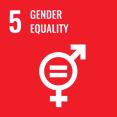
asset is our people: diversity will always be part of our culture and workforce, promoting innovation, fostering corporate culture across regions and positively impacting management and leadership styles. Respecting our social mission statement has become essential in a world moving towards more sustainability.
> Strategy
>Operations reporting
> Equipment reporting
> Packaging use & end-of-life reporting
> TCFD
> GRI index
Women & youth, diversity & equal opportunity
report 2022
Women & youth, diversity & equal opportunity

Diversity of governance bodies and employees (% of women vs. men)
* Variable pay plan
Diversity of governance bodies and employees (by age)
Managerial positionsAge bracket Employee category 20-2425-2930-3435-3940-4445-4950-5455-5960-6465-69 Total Employee 0 2 7 8 7 10 11 10 5 0 60 VPP employee 0 7 34 62 63 46 36 22 7 4 281 Middle management 1 0 9 38 53 58 50 49 20 4 282 Senior management 0 0 1 8 28 25 42 35 11 2 152 Executive & extended management 0 0 1 0 0 1 4 2 0 0 8 Total 1 9 51 116 151 140 143 118 43 10 783
Year Employee VPP employee* Middle managementSenior management Executive & extended management Board of directors Total (in %) 2022 Women 14 Women 18 Women 17 Women 13 Women 0 Women 0 Women 16 Men 86 Men 82 Men 83 Men 87 Men 100 Men 100 Men 84 Year Employee VPP employee* Middle managementSenior management Executive & extended management Board of directors Total (in %) 2021 Women 15 Women 18 Women 17 Women 11 Women 0 Women 0 Women 16 Men 85 Men 82 Men 83 Men 89 Men 100 Men 100 Men 84 Bobst Group SA 38 Sustainability report 2022 > Strategy >Operations reporting > Equipment reporting > Packaging use & end-of-life reporting > TCFD > GRI index
Young leaders (< 35 years old) present in management of Bobst Group
BOBST initiatives and achievements 2022

For many years, BOBST has undertaken initiatives to train young employees, so better to integrate them into the Group’s management and encourage their access to leading positions.

Youth Committee
This is a group of young and diverse employees, aged between 25 and 35, from all business areas of a local entity, chosen by their management for their talents and development potential. They are entrusted with specific projects (continuous improvement with a transversal approach) and collaborate with the top management. 2022 marked a turning point in developing this concept within the Group. The Youth Committee redefined its governance and objectives to prepare the ground for its implementation in other Group entities.
Apprenticeship
For over 130 years, BOBST has ensured that its skills and values are passed down to the younger generation. In specially designed vocational training centers, apprentices acquire technical, methodological, social, and personal skills to build the company’s future. More than 3 500 apprentices have successfully been trained since 1929. More than 10% of middle and senior management positions of Bobst Mex SA are held by former apprentices.
Women & youth, diversity & equal opportunity
Women Men 2021202220212022 Senior management 0 1 1 1 Middle management 2 6 5 19 Bobst Group SA 39
report 2022
Strategy
reporting
Equipment reporting
Packaging use & end-of-life reporting
TCFD > GRI index
More than 10% of middle and senior management positions of Bobst Mex SA are held by former apprentices
Sustainability
>
>Operations
>
>
>
Sustainability report 2022
> Strategy
>Operations reporting
> Equipment reporting
Immersive mission in foreign languages. As part of BOBST’s initiatives to further develop apprentices for national and international challenges, Bobst Mex Training Center successfully launched a pilot project allowing two youths to experience an immersive three month mission in another language.
Bobst Mex
Year
(Switzerland)
Equal remuneration of women to men
Bobst
Bielefeld (Germany)*
* An error occurred in the Bielefeld data in SR 2021. As a result, the published figures for 2021 showed the total number of apprentices in training, not the number of youth who completed their apprenticeship. No apprentice finished its training this year, since Bobst Bielefeld relaunched its apprenticeship program in 2020.
Young leaders development program
This development program (pilot in 2021) involves 20 young leaders (max. 35 years old) with a diverse representation of countries and functions, with a statistical over-representation of women (30% of women on the program against 16% of women in the Group).
Bobst Mex (Switzerland) is the most mature site in compensation, salary, and benefits analysis within the Bobst Group. Its management board and Representatives of the Employee Commission regularly discuss these topics. Since the Swiss Gender Equality Act (GEA) revision on 1 July 2020, wage transparency has been mandatory in Switzerland. The administrative compliance workload was substantial for BOBST in Mex (Switzerland), and accreditation costs amounted to around CHF 20 000.–. Starting in October 2020, the internal analysis of staff compensation was completed in June 2021. From July 2021 to June 2022, PricewaterhouseCoopers carried out the verification process and delivered the certification of equal remuneration to Bobst Mex.
At Group level, BOBST will deploy a similar approach to perform a remuneration analysis compared to Bobst Mex by 2025.
Group objectives by 2025
– Increasing the proportion of women within the Group and strengthening youth inclusion training;

– Appointment of female members into the Board of directors;
– Remuneration ratio 1:1 between men and women within the Group.
> Packaging use & end-of-life reporting
> TCFD
> GRI index
Women & youth, diversity & equal opportunity
Total of successful apprenticesTotal of women
2
2022 40 apprentices
women
2
2021 39 apprentices
women
0
Year Total of successful apprenticesTotal of women 2022 2 apprentices
women
2021 17 apprentices 3 women
Bobst Group SA 40
SwissSkills Championship 2022
Two BOBST apprentices won gold medals.
This is a first. Until now, a Frenchspeaking team had never won the title in this category
The mecatronics duo Bastien Chaignat and Marius Fabbri also part in the competition. First they managed to qualify for the semi-finals and then for the finals of this national championship in which over than 1 000 apprentices in 150 different trades participate yearly.


We are pleased and proud that our two mecatronics won the gold medal and thus became the 2022 SwissSkills Champions in the mecatronics branch. Bravo for your commitment, your motivation, your rigor and your discipline!
Congratulations and thanks!
Gold medalists at the Swissskills 2022
National Education Award 2022
Sustainability report 2022

> Strategy
>Operations reporting
> Equipment reporting
> Packaging use & end-of-life reporting
> TCFD
> GRI index
Bastien
Chaignat, Mecatronics
Marius Fabbri, Mecatronics
In 2022, BOBST was awarded the national education prize by the Hans Huber Foundation and Foundation FH SCHWEIZ. The prize is awarded to companies that demonstrate outstanding services in vocational training and serve as a role model throughout Switzerland.
Women & youth, diversity & equal opportunity
Milovan Ilic, Head of Professional Training
Bobst Group SA 41
Innovation
Essential to the competitiveness and profitability of companies, innovation has also become a priority driver for greater sustainability in the packaging industry through even more resource-saving solutions.
BOBST and its partners have been developing new solutions, addressing every step of the packaging value chain, from ecofriendly substrates (see section Environmentally friendly packaging on page 63) to more energy-efficient production processes, less waste, and higher recyclability. This holistic approach changes the way packages are designed and produced, to reduce effectively their environmental footprint and advance the packaging industry sustainably and economically in the long term.
Connectivity, digitalization, automation, and sustainability: the four cornerstones of BOBST’s vision to shape the future of the packaging world, has set high-level ambitions on innovation. Along with the delivery of best-in-class machines, it emphasizes new technologies and capabilities within the entire packaging value chain that will orchestrate the whole production workflow and enable it to generate long-term social and environmental benefits while creating economic profits for itself and its customers.
At BOBST, the different product lines and Group Research and Development drive innovation at their respective levels, particularly in developing incremental and trailblazing innovations for the machines. In addition, our group level development process, Product Development Process (PDP) includes mandatory sustainability deliverables (see section Machinery energy consumption on page 55). That means a systematic rethinking of how BOBST’s Equipment Stream designs and engineers new products to meet performance and quality requirements while using fewer resources across the complete life cycle of the equipment.
Anchoring sustainability in R&D processes
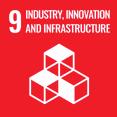
To better anchor sustainability into BOBST innovation culture, the Group embedded sustainability in every new product and function development. Since this first implementation step in 2021, it has already been used in new product introductions.
> Strategy
>Operations reporting
> Equipment reporting
> Packaging use & end-of-life reporting
> TCFD
> GRI index
Innovation
Bobst Group SA 42 Sustainability report 2022
In 2022, BOBST developed a trio of improvements on its die-cutterstamper-flexo (DSF) printing product line, with possible use on both new machines and old ones:

1. A new Bernoulli suction 3D-printed part that allows up to 8% in electricity savings by using smaller pumps that achieve similar performance;
2. Vacuum claw pumps replacing vane pumps, leading to 5% in electricity savings;
3. A brake energy recovery system that saves 1% electricity, with a possible implementation on other machines.
When combining those improvements on a single flatbed die-cutter, customers can save up to 14% of electricity.
> Strategy
>Operations reporting
> Equipment reporting
> Packaging use & end-of-life reporting

> TCFD > GRI index
Up to 14% electricity savings
Innovation
Bobst Group SA 43
report
Sustainability
2022
Procurement & supply chain
Supply chain and procurement due diligence are essential to identify and address human rights and environmental risks. BOBST’s new supplier transparency requirements enable it to source more responsibly up the value chain.
BOBST takes the commitment to drive operations and its supply base in a manner that minimizes environmental effects and enables a positive social impact. Sustainability becomes a core business decision factor along with risk management, quality, cost, and delivery performance. We have chosen to target the riskiest suppliers with a risk-based approach, including documentary, on-site assessments and EcoVadis partnership to secure the mitigation plan.
Suppliers’ due diligence and transparency
BOBST’s sustainability core team developed a due diligence process with a risk-based approach to meeting the Swiss Ordinance on Due Diligence and Transparency in relation to Minerals and Metals from Conflict-Affected Areas and Child Labor. It’s part of the requirements of non-financial transparency for Swiss companies that entered into force in 2022 (counterproposal to the Responsible Business Initiative (RBI) adopted by the Swiss Federal Council). After approbation by the Board of Directors and the Group Executive Committee, the Chief Procurement Officer and the Head of Corporate Sustainability followed it up with a quarterly steering committee. The sustainable procurement vision and policy were set in 2022 to enforce the corporate sustainability strategy throughout the purchasing community and its related supply chain.

Suppliers not fulfilling the due diligence will be downgraded to new business hold status as per standard sourcing process performance management. The business relationship will stop if a supplier fails to comply with the Supplier Code of Conduct and does not improve on the other performance criteria.
An integrity line is available for internal and external stakeholders to report any deviations.
Achievements 2022
After a strategy and vision workshop in 2022, all new suppliers were onboarded in the sustainability due diligence process. Under the responsibility of Group Purchasing, each new supplier was requested to sign the Supplier Code of Conduct, while the BOBST purchasing staff completed a supplier risk assessment. EcoVadis, with which a partnership was entered into, further performed an assessment of suppliers, in accordance with our risk-based sample of 276 suppliers.
Sustainability report 2022
> Strategy
>Operations reporting
> Equipment reporting
> Packaging use & end-of-life reporting
> TCFD
> GRI index
Procurement & supply chain
Bobst Group SA 44
For existing suppliers, BOBST’s due diligence process could be summarized by this four steps approach, validated by BOBST Audit Committee: – STEP 1 – Compliance with Supplier Code of Conduct: target 80% of the spend; 82% done;
STEP 2 – Supplier Risk Assessment (SRA): 276 suppliers targeted by our risk-based approach; 91% done;
STEP 3 – EcoVadis assessment: 276 suppliers targeted with a minimum rating of 25/100; started in Q3-2022, 32% done;
STEP 4 – Full assessment for suppliers with sustainability risks: 100% of cases are targeted; no supplier was identified as being “at risk” through our Supplier Risk Assessment or EcoVadis.

BOBST has investigated and confirms itself to be below the limit of import and processing quantities with regards to section 2, art. 3-4, related to minerals and metals from conflict and high-risk areas from the Ordinance.
Targets 2023
To execute our vision and drive our supply chain transformation, BOBST has committed to awarding 50% of its spend to sustainable suppliers. As a first step, sustainable suppliers mean that a Supplier Code of Conduct is signed, Supplier Risk Assessment established and an EcoVadis rating equal to or above 25 provided. The purchasing community has been incentivized accordingly and will be monitored from 2023 onwards to meet this ambitious target.
Supplier social assessment
The new supplier selection process enforced in 2022 added sustainability chapters, including social criteria such as child labor, conflict minerals and business ethics. In 2022, in line with this deployment phase and as per purchasing process in place, 76% of new suppliers have been audited using such criteria. None of those audits have evidenced risks on human rights.
For existing suppliers, sustainability and social criteria are considered through our Supplier Risk Assessment audit. For suppliers considered “at risk” the related actions are tracked and followed on a quarterly basis.
Selected suppliers are also assessed by our partner EcoVadis and actions are tracked and followed along with the Supplier Risk Assessment process previously mentioned.
In our sustainable procurement policy, we require our supplier to take action to improve environmental and social impacts and share results through a third party assessment body.
> Strategy
>Operations reporting
> Equipment reporting
> Packaging use & end-of-life reporting
> TCFD
> GRI index
Procurement & supply chain
–
–
–
Bobst Group SA 45
report 2022
BOBST requires its suppliers to take action to improve environmental and social impacts
Sustainability
Business ethics
Social responsibility is essential to sustainable business, alongside economic and environmental accountability. BOBST sees it as a duty to respect fundamental human rights and corporate values. The Group’s anti-corruption policy and the Employee Code of Conduct maintain the highest ethical standards in professional life.
To a very large extent, the reputation and image of a company are determined by compliance with the law and the ethical behavior of its managers and employees. Long before the launching of its Worldwide Code of Employee and Business Conduct in 2017, Bobst Group had always interacted with its stakeholders – colleagues, customers, suppliers, and authorities – as a responsible business actor.
The same principles guide BOBST in selecting its business partners and are the basis for evaluating a supplier’s performance and deciding whether or not to maintain a relationship. As a multinational corporation with operations in many countries on several continents, BOBST sees that the respect of aligned and coherent values throughout its brands and local entities can be a real asset for the Group’s image and a key to all its future success.
Group Compliance Program
BOBST’s core values do not tolerate any activity related to corruption in any part of its value chain. To this end, anti-corruption is essential to the Group’s overall compliance program (see more details on page 44).
BOBST’s due diligence process helps identify any related risks arising from using third parties and concerns all local entities covered by this sustainability report. Group Compliance is ultimately responsible for the review and approval or rejection of third parties based on the results of the performed checks.
Risks management and anti-corruption policy
BOBST continuously analyses its value chain and takes appropriate measures to prevent identified corruption risks. The Group Compliance Officer is in charge of leading the fight against corruption. However, the ultimate responsibility lies with management and employees. Relevant policies and procedures are in place for bribery and corruption.
Sustainability report 2022

> Strategy >Operations reporting
> Equipment reporting
> Packaging use & end-of-life reporting
> TCFD
> GRI index
Business ethics
Bobst Group SA 46
BOBST’s supplier code of conduct touches upon several key RBI (counterproposal to the Responsible Business Initiative adopted by the Swiss Federal Council) topics, and includes anticorruption, antitrust, employment, human rights, environment, health and safety, IP and data protection, global trade compliance, responsible sourcing of minerals, management system, supply chain monitoring and reporting line. It also provides information about Bobst Group Integrity Line, the internal reporting channel for potentially unethical behaviors in the organization, which is also open to suppliers.


The Supplier Code of Conduct is part of every contractual relationship and exists in more than ten languages.
BOBST’s anti-corruption policy and global compliance training
It has been rolled out, in addition to the guidelines in the Employee and Business Conduct Code. The Group Compliance Officer also conducted in-person training attended by 398 employees, and created an e-learning module on anti-corruption followed by 1 379 people. 61% of managerial staff (142 managers) have followed the course during the year with the objective to have trained all of them by the end of 2023.
Furthermore, all agents and intermediaries receive the policy as part of their contracts and are subject to a compliance due diligence before being hired by BOBST (and upon renewal).
Business ethics
Bobst Group SA 47 Sustainability report 2022 > Strategy >Operations reporting > Equipment reporting > Packaging use & end-of-life reporting > TCFD > GRI index
The Supplier Code of Conduct is part of every contractual relationship
Accomplishments 2022
In 2022, Group compliance completed the Supplier Code of Conduct, which the purchasing department is responsible for deploying and monitoring within the supply chain, in collaboration with an internal audit (see more details on page 45). In addition, all agents and intermediaries were trained on BOBST’s anti-corruption policy. Group Compliance also evaluated its governance framework (done by an external law firm) and will implement measures to improve certain areas during 2023.
Targets 2023-2025
BOBST aims to increase business ethics awareness by periodically (re-)training the target population on relevant topics such as bribery, conflicts of interest, and ethical decision-making.
– Review and update the Worldwide Employee Code of Conduct – wherever needed – during 2023;

– Roll out new guidelines and specific processes in conflict of interest, gifts and entertainment, and competition law;
– Ongoing training for agents, intermediates, and BOBST employees, to increase awareness and understanding of compliance-related topics.
Group Compliance reports bi-annually on training to the Audit Committee of the Supervisory Board. Nevertheless, at this point, it is not possible to publish complete figures due to the multiplicity of processes and systems used globally. However, Group Compliance is in contact with the owners of such processes/systems to find a harmonized way of recording and reporting data in the future.
Sustainability report 2022

> Strategy
>Operations reporting
> Equipment reporting
> Packaging use & end-of-life reporting
> TCFD
> GRI index
Business ethics
Bobst Group SA 48
Digitalization & data management

Printers and converters are actively working to optimize production resources and reduce waste. They need more efficient means to automate plant and job workflows, and they require reliable quality control systems at each step. At the same time, they strive to optimize equipment performance, increase productivity, and avoid unexpected downtimes. Most of the above requirements have one thing in common: digitalization.
Digitalization, along with connectivity and automation, fuels the vision of BOBST for the future of the packaging industry, which combines growth and sustainability.

To BOBST’s mind, digitalization makes possible end-to-end solutions, closing the loop from artwork to final product, to reduce callbacks and waste. It enables information transparency and data collection within the company to make its management more efficient and profitable. Using this data allows better control of the entire machine process and increases equipment productivity and efficiency. But digitalization also allows BOBST to measure the impact of machine usage accurately. With recipe measurements and job parameters, IoT solutions can identify the best settings for more sustainable production.
BOBST organization
At the operational level, the digital transformation of the Bobst Group involves the implementation of common work platforms and software used by all employees. This digitalization is designed to standardize business and management processes to increase the Group’s operational efficiency and provide better services to its customers.
Digitalization & data management
BOBST Connect Bobst Group SA 49 Sustainability report 2022 > Strategy >Operations reporting > Equipment reporting > Packaging use & end-of-life reporting > TCFD > GRI index
BOBST data and services

Bobst Group’s flagship digital product, BOBST Connect, is a one-stop platform that gives printers, converters, and tool manufacturers access to digital solutions using state-of-the-art Internet of Things (IoT) technology. It covers five domains: prepare, produce, react, maintain, and optimize, and will adapt to new operational needs to maintain best-in-class solutions and services to customers. Some of the current BOBST Connect solutions include remote equipment monitoring and performance management, a comprehensive production reporting set of features designed to quickly access detailed machine production, process, and technical data, and MyBOBST, a personal portal for parts, order tracking, technical information, customer support, special offers, and real-time machine data.
Data and zero-fault packaging
Machine data management is also used to reduce the environmental impact of processing activities. For example, across one unified digital workflow, labels are produced from the PDF, with 100% inline inspection as a closed loop, to the final embellished and finished products. BOBST digitalized end-to-end control solutions, like oneINSPECTION and ACCUCHECK (inline quality control system), Digital Inspection Tables, and BOBST PREMIUM GAP CONTROL make zero-fault packaging a reality today. It avoids product damage or poor quality and mistakes in production, all leading to unnecessary waste and negative environmental impacts.
Sustainability report 2022

> Strategy
>Operations reporting
> Equipment reporting
> Packaging use & end-of-life reporting
> TCFD
> GRI index
Digitalization & data management
Bobst Group SA 50
BOBST digitalized solutions for more sustainability

Beyond machinery optimization, new technologies based on digital processes bridge the gap between printing technologies. For instance, oneECG (Extended Color Gamut) is a digitized process to print a larger color gamut without the need for spot colors. The process guarantees color consistency on any substrate, needs no print unit washing between jobs and consumes 30% less ink than a spot color-based process.
Another example: BOBST invests in the most recent digital technologies for designing and producing 3D printed parts. These technologies offer a wide range of opportunities for the Group and its customers. The almost unlimited ability to design complex parts allows for instance the creation of bio-inspired parts which are more efficient in terms of energy consumption when used with fluidics. 3D printing is also a powerful way to combine several otherwise conventionallyproduced parts into one. It can also make replacement parts ondemand, close to their point of use, saving on time, storage and transport requirements.
As sustainability and digitalization are both cornerstones of BOBST’s vision for the packaging industry, all BOBST product lines are linked to the IoT platform (BOBST Connect). That ensures the full availability of machine data and informs users how different aspects of OEE (Overall Equipment Effectiveness) impact production. Moreover, it enables them to identify and eliminate wastes and losses in manufacturing more sustainably.

Sustainability report 2022
> Strategy
>Operations reporting
> Equipment reporting
> Packaging use & end-of-life reporting
> TCFD
> GRI index
Digitalization & data management
Bobst Group SA 51
All BOBST product lines are linked to the IoT platform BOBST Connect
Talent attraction & satisfaction
Talent has become an essential issue for any organization. When companies develop a strong reputation for their products and services and a genuine commitment to improving their customers’ business and sustainable needs, they are more likely to attract and retain employees. The active Employer Branding Bobst Group aims to hire top talents in cutting-edge technologies and prepare them for management roles through mentoring programs.
Shaping the future of packaging through digitalization, connectivity, automation, and sustainability is the strategy BOBST pursues and commits to deploy within its industry. This shift from a mechanical to a digital world implies that Bobst Group needs to address and hire different work profiles in the labor market from what it has been used to and expected previously. In fields like software development, IoT (Internet of Things), digital printing, and sustainable substrates, this requires attracting talents with new and specific skills. In addition, BOBST faces two further challenges in its workforce:
– A quarter of the Group’s employees will retire within the next ten years;
– Work habits and corporate loyalty have evolved, resulting in a more volatile workforce and less predictable turnover.
Employer branding and mentoring programs
BOBST understands Employer branding as an essential element in its strategy to attract the new talents the Group needs for the future. In this perspective, several initiatives were started and continue to be implemented:
– Development of solid relationships with targeted universities and technical schools to reinforce the Group’s visibility and ability to attract young graduates and the next generation of leaders;
– Concurrently best-in-class candidate experience since the first stages of contact with Bobst Group, providing them with relevant information in a transparent way and listening to their feedback;
– Continuous employee feedback and satisfaction levels assessment through regular engagement surveys, committing to improving the employee experience and making them ambassadors of the Group;
– Implementation of mentoring programs to prepare young leaders for management roles, increasing their ability to progress and be ready to take leadership roles and more significant responsibilities in the long term with dedicated development;
– If employees remain loyal to the company, it is thanks to the quality of the people who work there and to the principles of leadership of BOBST (BOBST leadership manifesto).
Sustainability report 2022
> Strategy
>Operations reporting
> Equipment reporting
> Packaging use & end-of-life reporting
> TCFD
> GRI index
Talent attraction & satisfaction
Bobst Group SA 52
eNPS (Employee Net Promoter Score) metrics
Based on the Net Promoter Score (NPS) used to measure customer satisfaction, Bobst Group uses the Employee Net Promoter Score (eNPS) to evaluate how its workforce perceive it as an employer. The eNPS system consists of a two-question survey: the first question asks employees to rate, on a scale from zero to ten, how likely they would recommend the organization as a place to work. The second is an open-ended question asking why they chose the rating they did.
Using eNPS (employees) and cNPS (candidates) enables Bobst Group to survey employees and candidates regularly to stay up to date and track trends over time. And as their eNPS goes up, they can include that score in recruiting materials, attracting a higher caliber of talent to their workforce. Comparing progress over the years will help BOBST Employer Brand improve to attract, retain and keep its employees.
Group objectives by 2025
Increasing the proportion of women within the Group and strengthening youth inclusion training.
Sustainability report 2022

> Strategy
>Operations reporting
> Equipment reporting
>
use & end-of-life reporting
>
>
Bobst Group’s total of leavers (573)
Talent attraction & satisfaction
Bobst Group’s total of new hires (902) Year Total of new hires By age group (# of new hires and percentage of total new hires) By gender (# of new hires and percentage of total new hires) By Region (# of new hires and percentage of total new hires) 2022 902 < 30y 367 (41%) Women 168 (19%)Americas 91 (10.1%) 30-50y 450 (50%) Men 734 (81%)Asia 197 (21.8%) > 50y 85 (9%) EMEA (Europe, Middle East and Africa) 614 (68.1%)
Year Total of leavers (Group turnover rate) By age group (# total leavers/ turnover rate) By gender (# total leavers/ turnover rate) By Region (# total leavers/ turnover rate) 2022 573 (10.7%) < 30y 164 (18.6%) Women 124 (14.6%)Americas 53 (11.1%) 30-50y 266 (9.7%) Men 449 (10.0%)Asia 112 (13.0%) > 50y 143 (8.3%) EMEA (Europe, Middle East and Africa) 408 (10.2%)
Bobst Group SA 53
Packaging
TCFD
GRI
index
Equipment reporting
To reduce the environmental and social impact of future and existing packaging machines at the customer’s site with improvements on machine performance and new services.

Sustainability report 2022 > Strategy > Operations reporting >Equipment reporting > Packaging use & end-of-life reporting > TCFD > GRI index
Sustainability report 2022

> Strategy
Machinery energy consumption
BOBST has always been working on reducing its packaging machines’ energy consumption and extending their lifetime. As a manufacturer, Bobst Group is committed to reducing greenhouse gas emissions in its value chain (scope 3) while continually optimizing its customers’ equipment to meet their needs for profitability and sustainability. However, the recent energy supply and cost issues that converters have faced require rapid solutions to support the packaging industry to control and save energy more effectively than ever before. As a result, BOBST is accelerating the development of appropriate technologies to deploy them as quickly as possible in the marketplace.
Given the size, functionality, and technical performance of packaging machines producing at high speed and equipment designed to operate 24 hours a day, seven days a week, the environmental load of machinery energy consumption remains a significant challenge in the packaging industry. Therefore, in addition to ink, waste, and substrate reduction, BOBST is focusing on keeping the energy needs of its packaging solutions to a minimum, to lower its customers’ production costs and decrease their carbon footprint.
Optimizing energy requirements
BOBST’s 2021 Sustainable Report outlined that a packaging machine consumes the most energy during its use phase at the converter’s premises (around 90% of its life-cycle carbon impact alone). To improve the energy requirements on both new equipment and the base of installed machines, BOBST not only launched new features and training in 2022 but allocated two people to this subject,
acknowledging the importance of measuring and reducing the climate impact of its packaging equipment.
The carbon and energy-saving calculator commissioned by the Business Unit Services & Performance (BUSP) has made it possible to compare obsolete direct current motors (DC) with new generation alternating current motors (AC). On average, the latter saves 13% electricity (equivalent to 18 MWh per year), as shown by the value BUSP has measured on retrofitted customer equipment. As a result, a yearly saving of 7 tons of CO2 emissions is equivalent to what a fossil fueled car emits during a 50 000 km trip. With the present energy crisis, this retrofitting has a payback in 4-7 years.
In die-cutting, the new BOBST Hybridblanker delivers a versatile tool frame that replaces several dedicated structures, saving raw material and weight during shipping.
> Operations reporting
>Equipment reporting
> Packaging use & end-of-life reporting
> TCFD
> GRI index
Machinery energy consumption
Bobst Group SA 55
EXPERTFOLD 165 e-commerce version, a folder-gluer line, offers two features that proactively contribute towards sustainability in converting, while providing key operational benefits at the same time. The first is a split driving system, which has a key role to play in the reduction of waste and lower energy use by eliminating disruptive stop-start production runs. When the system detects an error in the process, such as incorrect glue application, the folder-gluer halts production of the defective boxes while continuing production of compliant boxes. In essence, the first half of the machine can be stopped to correct the issue, while the second half continues to run. The key advantage here lies not just in continued productivity, but in fluid correction of issues without stopping the entire production line. The second key sustainability edge in the EXPERTFOLD 165 e-commerce version is an update to the POLYVACUUM module. The technology has recently been updated to optimize energy resources; a redesigned lower vacuum conveyor system has resulted in better air flow management, alongside a reduction in air consumption of up to 20%.
In 2022, BOBST set up the first climate impact and awareness training within the Group (90 people from managerial positions including BOBST Board of directors and top management executives) and developed an online eco-design course for R&D engineers, managers, and supply chain actors. BOBST also approved a proper sustainability machine evaluation sheet and implemented it on 13 essential BOBST products by the end of that year. It has provided an overview of their environmental impacts (with a strong focus on energy consumption) and insights into needed improvements. In the past, electricity was the only energy to be tackled. With its new indicators, BOBST can also now account for compressed air and the occasional gas consumption.
Goals, targets, and indicators for 2023
BOBST will announce the SBTi (Science-Based Targets Initiative) reduction targets in its sustainabiity report 2023, including targets concerning the energy consumption of BOBST machines.
Designing more sustainable products – All product lines’ R&D and managing staff are targeted by workshops on energy savings, being developed at a wide scale in 2023.
Eco-design course – Forty-six people completed this training in 2022. The 2023 target is to enroll at least 200 participants among R&D engineers, Supply Chain & Management.
Sustainability machine evaluation sheet – The 2023 target is to have the whole catalog of BOBST machines evaluated using the same method. On this basis, BOBST will head to its next goal: the online monitoring of the machine’s impact during the use phase at the customer’s plant through BOBST Connect.
Sustainability report 2022

> Strategy
> Operations reporting
>Equipment reporting
> Packaging use & end-of-life reporting
> TCFD
> GRI index
Machinery
energy consumption
Bobst Group SA 56
BOBST is focusing on keeping the energy needs of its packaging solutions to a minimum
Extending the life of BOBST machines
By transforming raw materials into packaging equipment, BOBST, like all manufacturing industries producing capital goods, uses natural resources and energy which have a significant environmental footprint. BOBST, therefore, offers a wide range of upgrade solutions as well as spare parts availability for several years to enhance the life of its machines and slow down obsolescence.
With the extension of equipment life, BOBST and the packaging industry win on both counts: repairing and upgrading machinery avoids environmental impacts related to the production of a new machine, but it also reduces customers’ operating costs dramatically by ensuring that the efficiency of older machines remains at its best.
As long as the resource consumption (such as energy) of an older machine does not significantly exceed that of a new model, extending the life of the equipment is worthwhile to preserve the environment.
This assumption is truer for a BOBST machine that is built to last. From component selection to the assembly process and quality controls, everything in its manufacture aims at robustness. BOBST machinery is known for its reliability and longevity. Compared to similar equipment available on the market, its lifespan is on average longer and reaches between 15 and 30 years.
Upgrades for lasting performances and more sustainability
Equipment upgrades, retrofits, and enhancements are vital for converters to improve their productivity, remain competitive and meet the ever-changing packaging requirements of brand owners.
Depending on the configuration, age, and condition of the equipment, an upgrade often costs less than purchasing a new machine. In addition, it extends the life of the equipment while slowing down its obsolescence. BOBST has deployed dedicated teams to tackle obsolescence related issues. Being one of the main causes of obsolescence, electronic parts are replaced with alternative components. But upgrading the machine to the latest standards has also the potential to reduce its environmental footprint. Retrofitting, for instance, is a great option to replace electric components with less energy-intensive alternatives.
Sustainability report 2022

> Strategy
> Operations reporting
>Equipment reporting
> Packaging use & end-of-life reporting
> TCFD
> GRI index
Extending the life of BOBST machines
Bobst Group SA 57
Over 10 000 standardized upgrades are available
BOBST features a large span of retrofits and upgrades to solve problems of productivity, quality, or sustainability and to extend the life of the machine:
– Annual contract to maintain critical devices (pump, chiller, coating heads) and reduce energy costs;
– Refurbishing refrigeration units with more environmentally friendly gas;

– Fluid folding to improve the quality of bending and reduce the waste to throw away;
– Energy saving motor upgrade (new IE generation);
– Improved operations for better printing on polyethylene (PE) and polypropylene (PP) based films using greener materials.
Since 2012, around 6.7% of the installed base of BOBST machines for the folding carton and corrugated board industries have been upgraded to reduce their environmental impact.
Offering a second youth to a 30 year old machine
BOBST offers an exclusive reconditioning service for old equipment following the circularity principle. The machines are taken back on-site and renovated before being reinstalled into their customers’ production lines. Unique in the packaging industry, BOBST’s remanufacturing concept (which includes some “carousel”) fosters sustainability and allows the company to extend the life of its machines while reducing its environmental impact through modernization (new electronics).
In addition, Cm Service Srl, the Italian supplier specializing in refurbished corrugated machines that BOBST took over in 2021, has also developed its activities in reconditioning large-format equipment. As a result, by the end of 2022, Cm Service had refurbished eight packaging machines for customers in six different European countries.
BOBST Oil Cleaner, an upgrade with eco-benefits
This advanced filtration technology removes impurities and contaminants from the oil used in industrial machinery. Recycling and reusing oil lowers the need for costly and environmentally damaging oil production. With clean oil, machinery becomes more efficient, which reduces the consumption of energy and carbon emissions, and has fewer impacts on the environment.
Sustainability report 2022

> Strategy
> Operations reporting
>Equipment reporting
> Packaging use & end-of-life reporting
> TCFD
> GRI index
BOBST has developed with Nexales – the Swiss publisher of digital B2B solutions – a unique application for Mobile Sales to actively market its retrofit and upgrade solutions. The Group can thus offer them even more efficiently to its customers to extend their machines’ life and participate in reducing their carbon footprint.
Extending the life of BOBST
Bobst Group SA 58
machines
Sustainability

Machine safety for the user
Customer safety is also a top priority for BOBST. Therefore, providing safe production conditions for the technicians using its packaging solutions properly is a requirement Bobst Group focuses on to prevent accidents or injuries while operating its equipment.
BOBST’s product safety strategy reflects the company’s ongoing commitment to maintaining excellent health and safety standards in all workplace environments and protecting the welfare of its customers. Although each product line is responsible for its products, the whole Bobst Group follows a common approach to product safety, complying with its internal requirement and external safety regulation:
– For the development of new machines, BOBST considers European Directives as well as the latest harmonized safety standards;
– By continuously analyzing relevant regulations, BOBST ensures that its products are designed and manufactured according to the latest applicable standards;
Bobst Group’s certified machine safety experts are responsible for assuring that product lines have the necessary information to manage machine safety from the design phase. BOBST’s machine safety experts obtained a TUV NORD Certification (Certified Machinery Safety Expert, CMSE®) or equivalent certification;
– BOBST exchanges knowledge with external safety experts, as well as with safety device manufacturers.
Product safety policy management
BOBST conducted a few audits in 2022. That year, it focused on developing a new tool to evaluate product and machine safety to ascertain that their maturity level aligns with BOBST’s product safety policy and external regulation. In addition, a manager at the Group level supports the harmonization of all safety efforts and organizes additional training if necessary (CECE – Certified Expert in CE Marking).
> Strategy
> Operations reporting
>Equipment reporting
> Packaging use & end-of-life reporting
> TCFD
> GRI index
Machine safety for the user
–
Bobst Group SA 59
Product safety is a key component at BOBST
report 2022
Sustainability report 2022

> Strategy
> Operations reporting
>Equipment reporting
Most packaging manufacturers have very high safety requirements, and they expect BOBST to provide safe products and services. Product safety is, therefore, a key component at BOBST. The company strives to design and manufacture equipment to minimize dangers and harmful effects on human health. How BOBST products are manufactured, disposed of and used matters most to meet the highest level of security. At each step of the product development process, the safety of the machines during their whole life cycle is considered a fundamental element in protecting the operators’ health. Moreover, automated processes highly support ergonomics on the production floor, to eliminate the need for machine operators to carry heavy loads and reduce the risk of injury.
BOBST certification safety process
As an overall guideline, the BOBST safety policy is handled by a high level of expertise throughout the entire Group. Every four years, machine safety experts undergo recertification. The BOBST safety organization creates standards, directives, and procedures for all divisions, shares knowledge, and organizes regular training. Any safety events reported by customers are managed to provide a quick answer to reduce and minimize a possible impact.
All BOBST product categories are covered by the above safety measures globally.
Objectives
Continue to ensure a high level in machinery safety for all BOBST product, by taking into account introduction of the new European Machinery Regulation in the coming months.

> Packaging use & end-of-life reporting
> TCFD
> GRI index

the
Machine safety for
user
Bobst Group SA 60


Machine safety for the user
Bobst Group SA 61 Sustainability report 2022 > Strategy > Operations reporting >Equipment reporting
Packaging use
end-of-life reporting > TCFD > GRI index
At each step of the product development process, the safety of the machines during their whole life cycle is considered a fundamental element
>
&
Packaging use & end-of-life reporting
To contribute with solutions in the value chain to generalize more environmentally improved packaging, which have a reduced environmental impact and a well-managed end-of-life.

Bobst Group SA 62 Sustainability report 2022 > Strategy > Operations reporting > Equipment reporting > Packaging use & end-of-life reporting > TCFD > GRI index
Environmentally improved packaging
Packaging use & end-of-life cycle, the third pillar of the BOBST sustainability strategy, addresses the environmental impacts of packaging at the end of its life. Made of plastic (polymer), corrugated board, paper, or synthetic materials, the packages, once consumed, become waste. BOBST environmentally improved packaging covers a wide range of initiatives to intensify and accelerate the production of recyclable, compostable, biodegradable or reusable packaging solutions, new eco-friendly substrates, and the development of a circular packaging economy enabling high-quality material recycling.
The packaging sector presents numerous opportunities, but also various challenges, in particular related to the end-of-life (EoL) of the packaging. Despite the fact that BOBST has minimal leverage on the use & EoL of the packaging, it is part of a value chain responsible for generating considerable amount of waste and related issues, such as littering. Besides, the amount of waste resulting from EoL packaging made with BOBST machines is most likely significantly higher than the waste generated by Group’s operations themselves. Acknowledging this fact, BOBST puts efforts in developing environmentally improved packaging solutions. The complexity of developing sustainable solutions to implement more recyclability in packaging and improve their environmental footprint means that BOBST is actively working with stakeholders, brand owners, and even retailers across the value chain that are committed to sustainability to develop partnerships and collaborations.
Reducing the volume of packaging materials used, designing nonrecyclable multi-material packaging structures, or substituting difficult-to-recycle packaging materials with more recycle-friendly solutions, creates a real challenge for packaging designers and producers. The new materials and their behaviors differ from a processability and performance perspective. In general, sustainable and recyclable materials have inferior mechanical, thermal, and barrier properties than conventional substrates, reducing the protection these packages offer and the shelf-life of their products.
Waste generated by suboptimal packaging design, like oversized corrugated boxes in e-commerce or packages produced outside the desired specifications, lies outside BOBST’s packaging use (PU) & end-of-life (EoL) scope, as it depends on customers’ use of their production equipment (film producers and converters). The PU & EoL
Sustainability report 2022

> Strategy
> Operations reporting
> Equipment reporting
> Packaging use & end-of-life reporting
> TCFD
> GRI index

Environmentally improved packaging
Bobst Group SA 63
stream focuses on developing processes and packaging as manufactured products. It aims to improve its sustainability or develop alternative reusable, recyclable, biodegradable, or compostable materials to enable the industry to manufacture more environmentally friendly packaging.
BOBST current initiatives
BOBST oneBARRIER (HERO samples) sustainable substrates
Together with a supporting ecosystem of industry-leading partners and collaborators, BOBST has designed and developed a family of new high-barrier, mono-material, recycle-ready substrates which have performance levels equivalent to the non-recyclable mixed material equivalents. These solutions have been stepped up from R&D solutions to industrialized solutions and have been successfully promoted and accepted in the market. It will enable BOBST customers to fast-track the development phase in creating more circular packaging solutions and help reduce their time to market to help support waste reduction and resource circularity.
R-Cycle and circular economy initiative
The current difficulties in sorting out flexible packaging often result in downcycling or sending to the incinerator or landfill large quantities of material that could be recycled. R-Cycle is a cross-industry consortium launched with the aim of ensuring the traceability of single use plastics, thanks to Digital Product Passports (DPP) storing relevant recycling information along the flexible packaging production value chain. It thus enables the recovery of high-quality recyclables
supporting a functioning circular economy. BOBST completed a pilot at its Competence Center in Manchester, where the demo machine is R-Cycle ready.
Circular Economy for Flexible Packaging (CEFLEX) initiative
With over 190 European companies, associations, and organizations representing the entire flexible packaging value chain, BOBST contributes to CEFLEX’s Mission Circular by actively supporting two of its work streams, namely WS1 (design guidelines) and WS3 (sustainable end markets) where BOBST has used its Competence Centers in Manchester (United Kingdom), San Giorgio Monferrato (Italy) and also Bielefeld (Germany) to metallize, laminate and print recycled materials. CEFLEX commits to collecting all flexible packaging and over 80% of the recycled materials channeled into valuable new markets and applications to substitute virgin materials, to make all flexible packaging in Europe circular by 2025. A five-step roadmap to build a circular economy for flexible packaging has been endorsed by CEFLEX stakeholders, together with a set of actions needed by each part of the value chain to make it happen.

BOBST achievements 2022
The commercialized environmentally improved packaging solutions
BOBST and its supporting industry partners and collaborators developed in 2022 focused more on recyclable solutions based on mono-material polymer and fiber-based flexible packaging solutions to allow more resource and material circularity backing on the suitable collection, sorting, and recycling infrastructure.
Sustainability report 2022
> Strategy
> Operations reporting
> Equipment reporting
> Packaging use & end-of-life reporting
> TCFD
> GRI index
Bobst Group SA 64
Environmentally improved packaging
Two new recyclable packaging solutions
The PU & EoL stream and their supporting industry partners and collaborators positioned through the value chain developed a monomaterial polymer flexible packaging solution (oneBARRIER PrimeCycle) and a second one based on a mono-material fiber-based solution (oneBARRIER FibreCycle). In addition, independent recycling assessments were used to illustrate the recyclability of the developed environmentally friendly solutions.
4evergreen alliance membership
This cross-industry alliance aims to optimize fiber-based packaging circularity and climate performance to raise the overall recycling rate of fiber-based packaging to 90% by 2030. By bringing together the entire value chain, 4evergreen enables cooperation with a comprehensive outlook on fiber-based packaging’s life cycle. 4evergreen is driven by the insights and initiatives of its members via four technical workstreams (WS) that focus on different aspects of fiber-based packaging, as well as an information workstream and a steering group. BOBST joined the 4evergreen alliance in May 2022 and is currently selecting what workstreams to participate in.

BOBST future initiatives
Designed for recycling flexible packaging
With its supporting customers, partners, and collaborators, BOBST will continue to validate, develop and optimize its currently developed oneBARRIER recyclable packaging solutions for different product or market applications to extend its appropriate field and help to bring more circular and environmentally friendly packaging solutions into the market. Moreover, the PU & EoL stream is also investigating new environmentally friendly packaging solutions to be developed in BOBST’s four primary industries: folding carton, corrugated board, label, and flexible materials.
BOBST will start to investigate quantitative measures to help understand the impact of the developed solutions in terms of ease of recyclability and environmental impact while also supporting circularity and waste reduction.
BOBST will continue to contribute and participate actively in the three key consortiums it is involved in, namely CEFLEX, R-Cycle, and 4evergreen while continuing to review the industry to assess further cross-industry alliances of relevance to BOBST’s four primary sectors, which could help to support its sustainability strategy.
> Strategy
> Operations reporting
> Equipment reporting
> Packaging use & end-of-life reporting
> TCFD
> GRI index
Environmentally improved packaging
Bobst Group SA 65
BOBST addresses the environmental footprint of packaging holistically throughout its life cycle
Sustainability report 2022
Packaging use & end-of-life stream – vision, objectives, and KPIs
By 2030, BOBST wants its packaging use & end-of-life stream to be recognized as a leader of innovation and to provide revolutionary equipment and packaging solutions that allow new or disruptive types of environmentally improved packaging. BOBST solutions will support diverse stakeholders in the packaging supply chain to produce and deliver environmentally enhanced packaging solutions.
Objectives to 2025
The stream has identified a number of key objectives involving the development of environmentally friendly packaging solutions across the four industries BOBST represents, investigation into the tools or methods to assess the environmental impact of the packing solution developed, active participation in the selected main industry consortiums and/or alliances focusing on sustainability and providing training and dissemination internally and externally concerning the packaging solutions developed.
Targeted key performance indicators (KPIs)
The stream has created a number of supporting KPI’s aligned with the stream’s identified objectives, focused around the development and industry interest in environmentally improved packaging solutions.
Recyclable solutions downstream in the value-chain

Within the 3Rs Waste Management (a global initiative the packaging industry has already taken and is currently implementing to prevent packaging use & end-of-life waste, aiming to reduce, re-use, and recycle packaging waste to keep as much material & resources out of the landfill or incinerated as possible), BOBST focused on recycle-ready solutions to reduce PU & EoL waste for its customers and the general packaging industry downstream in the value chain.
> Strategy
> Operations reporting
> Equipment reporting
> Packaging use & end-of-life reporting
> TCFD
> GRI index
Environmentally improved packaging
Bobst Group SA 66 Sustainability report 2022
By 2030, BOBST wants to provide revolutionary equipment and packaging solutions that allow disruptive types of environmentally improved packaging
BOBST also takes actively part in several initiatives:
3Rs Waste Management
An initiative aiming to reduce, reuse, and recycle packaging waste to keep as much material out of the landfill, or to be incinerated, as possible.
R-Cycle

and circular economy initiative
A cross-industry consortium aiming to ensure the traceability of single use plastics, and enabling the recovery of high-quality recyclables supporting a functioning circular economy. One BOBST machine, the EXPERT K5 metallizer, is R-Cycle substrates ready.

Circular Economy for Flexible Packaging (CEFLEX) initiative
It commits to collecting all flexible packaging and over 80% of the recycled materials channeled into valuable new markets and applications to substitute.
4evergreen cross-industry alliance
This fosters synergies among companies promoting low-carbon and circular fiberbased packaging.
Sustainability report 2022

> Strategy
> Operations reporting
> Equipment reporting
> Packaging use & end-of-life reporting
> TCFD
> GRI index
Environmentally improved packaging
Bobst Group SA 67
Task Force on Climate-related Financial Disclosures
(TCFD) Bobst Group SA 68 Sustainability report 2022 > Strategy > Operations reporting > Equipment reporting > Packaging use & end-of-life reporting > TCFD > GRI index
The recommendations of TCFD have emerged as a significant climate-related risk disclosure framework. Therefore, BOBST’s sustainability report 2022 presents, for the first time, a report referring to TCFD. BOBST is committed to continuously refining the reporting and increasing the depth of analyses over time.
Sustainability report 2022
> Strategy
> Operations reporting
> Equipment reporting
> Packaging use & end-of-life reporting
> TCFD
> GRI index
Governance
The Board of Directors (BoD) determines BOBST’s corporate strategy and is responsible for the general risk evaluation process and the internal control system. In 2022, an update was provided to the BoD regarding the upcoming Swiss legislation on climate reporting, including an initial awareness training and the first activities undertaken to formalize the management of climate-related risks and opportunities at BOBST. The BoD signs and approves the sustainability report, including the TCFD part, from this report onwards.
Outlook
To successfully consider climate-related risks and opportunities, BOBST will adapt roles, responsibilities, and reporting processes where relevant. Further, specific training sessions on the topic will be held at the executive and board level to foster their knowledge and support their responsibilities.
Strategy
BOBST’s business activities might be affected by the impacts of climate change. These could be physical impacts, such as impacts from increased severity of extreme weather events or impacts from the transition towards a low-carbon economy, such as potential pressure on the availability of raw materials. In 2021, BOBST performed an initial ad-hoc review of potential climate-related risks and opportunities. One opportunity identified is, for example, reducing energy consumption and emissions from the machines (see section Machinery energy consumption page 55).
Outlook
BOBST’s key priority is identifying the most material climate-related risks and opportunities over different time horizons. Further, the Group will aim to assess their potential impacts on the business.
TCFD
Bobst Group SA 69
Risk management
BOBST has a Group-wide risk management system in place that is based on the COSO Enterprise Risk Management framework. During the past year, there was analysis of how to best integrate climaterelated risks and opportunities into the framework and how to consider their specific characteristics.
Outlook
The objective for 2023 is to formally embed climate-related risks and opportunities within the existing framework and processes. A key component is an annual process for identifying and assessing risks, including several dialogues with Group managers and Business Unit representatives. Based on the outcome of this process, BOBST will define mitigation measures where deemed necessary.
Metrics and targets
BOBST’s Greenhouse gas (GHG) inventory shows that most carbon emissions occur downstream in its value chain (see the detailed breakdown of the scope 1, 2, and 3 emissions and the comparison to the previous year on page 21).
Outlook
Bobst Group will communicate its SBTi reduction targets in its sustainability report 2023 and then closely monitor and report on its progress and achievements. Additionally, based on the annual risk identification and assessment process results, BOBST will consider additional metrics and targets each year to reduce climate-related risks and leverage climate-related opportunities.
> Strategy > Operations reporting > Equipment reporting
> Packaging use & end-of-life reporting

> TCFD
> GRI index
TCFD
Bobst Group SA 70 Sustainability report 2022
BOBST’s key priority is identifying the most material climate-related risks and opportunities over different time horizons
GRI index
Sustainability report 2022
> Strategy
> Operations reporting
> Equipment reporting
> Packaging use & end-of-life reporting
> TCFD
>GRI index
Bobst Group sustainability report 2022 has been prepared in accordance with the Global Reporting Initiative (GRI) Standards for the period of 1 January 2022 to 31 December 2022, and is established every year.
SA 71
Bobst Group
GRI index
Disclosure numberDisclosure title
GRI1 Foundation 2021
Statement of use
GRI 1 used
Applicable GRI sector standards
GRI2 General disclosures 2021
The organization and its reporting practices
2-1 Organizational details
Page/reference
See page 71
GRI 1 Foundation 2021
Not yet available
Sustainability report 2022
> Strategy
> Operations reporting
> Equipment reporting
> Packaging use & end-of-life reporting
> TCFD
>GRI index
Bobst Group SA is the legal name of the holding company
The trading name BOBST, the Group or the company are also commonly used to designate Bobst Group SA
Cover, back cover, annual report 2022
2-2 Entities included in the organization’s sustainability report Page 14, annual report 2022
2-3 Reporting period, frequency and contact point
2-4 Restatements of information
2-5 External assurance
Activities and workers
2-6 Activities, value chain and other business relationships
2-7 Employees
2-8 Workers who are not employees
Governance
2-9 Governance structure and composition
2-10 Nomination and selection of the highest governance body
2-11 Chair of the highest governance body
2-12 Role of the highest governance body in overseeing the management of impacts
2-13 Delegation of responsibility for managing impacts
See page 71, back cover, annual report 2022
Page 20, 40
This report was reviewed and approved by BOBST Audit Committee and Board of Directors, and will be subject to an external assurance as of report 2023
Page 2, annual profile 2023, annual report 2022
Women & youth, diversity & equal opportunity page 37
Occupational health & safety page 30
Annual report 2022
Articles of Association of Bobst Group SA
Annual report 2022
Annual profile 2023
Annual report 2022
Organization regulations of Bobst Group SA
2-14 Role of the highest governance body in sustainability reporting Page 4
2-15 Conflicts of interest
2-16 Communication of critical concerns
Organization regulations of Bobst Group SA
Annual report 2022
2-17 Collective knowledge of the highest governance body Page 4
2-18 Evaluation of the performance of the highest governance body Annual report 2022
Organization regulations of Bobst Group SA
GRI index
Bobst Group SA 72
Disclosure numberDisclosure title
2-19 Remuneration policies
2-20 Process to determine remuneration
2-21 Annual total compensation ratio
Strategy, policies and practices
Page/reference
Annual report 2022, Remuneration report 2022
Organization regulations of Bobst Group SA
Annual report 2022, Remuneration report 2022
Organization regulations of Bobst Group SA
Annual report 2022, Remuneration report 2022
2-22 Statement on sustainable development strategy Page 9
2-23 Policy commitments
Women & Youth, diversity & equal opportunity page 37
Procurement & supply chain page 44
Worldwide Code of Employee and Business Conduct, Charter of Bobst Group policy with regard to health, safety at work and environmental protection
Supplier Code of Conduct
2-24 Embedding policy commitments
Women & Youth, diversity & equal opportunity page 37
Procurement & supply chain page 44
Worldwide Code of Employee and Business Conduct
Charter of Bobst Group policy with regard to health, safety at work and environmental protection
Supplier Code of Conduct
2-25 Processes to remediate negative impacts
Women & Youth, diversity & equal opportunity page 37
Procurement & supply chain page 44
Worldwide Code of Employee and Business Conduct
Charter of Bobst Group policy with regard to health, safety at work and environmental protection
Supplier Code of Conduct
2-26 Mechanisms for seeking advice and raising concerns
2-27 Compliance with laws and regulations
2-28 Membership of associations
Business ethics page 46
Worldwide Code of Employee and Business Conduct
Articles of Association of Bobst Group SA, Organization regulations of Bobst Group SA
ACTSR (Switzerland)
AEnEc (Switzerland)
AFCO (Spain)
AIFEC (Spain)
AirPlus International AG (Switzerland)
AMEXICCOR (Mexico)
ANIDIGRAF (Mexico)
ANIPC (Spain)
Sustainability report 2022
> Strategy
> Operations reporting
> Equipment reporting
> Packaging use & end-of-life reporting
> TCFD
>GRI index
GRI index
Bobst Group SA 73
Page/reference
APIGRAF (Spain)
Arbeitskreis Prägefoliendruck e.V. (Germany)
Arbeitskreis Prägefoliendruck e.V. (Switzerland)
ASPAC (Spain)
Association suisse de la communication interne (Switzerland)
Association suisse de normalisation (Switzerland)
Association vaudoise des employés (Switzerland)
ATEC (Spain)
ATF (France)
BPIF (United Kingdom)
CEFLEX
Chambre vaudoise du commerce et de l’industrie (Switzerland)
China Packaging Federation (China)
China Packaging Federation Paper Products Committee (China)
China Plastics Processing Industry Association (China)
Confindustria (Italy)
Descartes Systems Group LLC (Switzerland)
Digitalswitzerland (Switzerland)
ECMA (Switzerland)
Économie Région Lausanne (Switzerland)
ERA – European Rotogravure Association (Switzerland)
ESD Europaverband der Selbstständigen Deutschland (Germany)
Europäischen Patentamts (Switzerland)
European Carton Makers Associations (Switzerland)
Fedafin AG (Switzerland)
FEFCO (Switzerland)
FFI e.V. Fachverband Faltschachte-Industrie (Germany)
FIA (United Kingdom)
Focusmem (Switzerland)
Förderverein Deutsches Verpackungs-Museum e.V. (Germany)
Förderverein Papierzentrum FÖP e.V. (Germany)
4evergreen
Forum économique et politique (FEP) (Switzerland)
GIM-CH (Switzerland)
Handelskammer Deutschland-Schweiz (Germany)
Sustainability report 2022
> Strategy
> Operations reporting
> Equipment reporting
> Packaging use & end-of-life reporting
> TCFD
>GRI index
GRI index Bobst Group SA 74
Disclosure numberDisclosure title
74
Page/reference
IHK Industrie- und Handelskammer Mittlerer Niederrhein (Germany)
International Management Association (Switzerland)
Innovaud (Switzerland)
IPG (Switzerland)
IPG, International Packaging Group (Switzerland)
Mahratta Chamber of Commerce, Industries and Agriculture, Pune (India)
Mergermarket (Switzerland)
National Technical Committee 192 on Printing Machinery of standardization Administration of China (China)
Peergroups Rheinkreis Neuss (Germany)
PICON (United Kingdom)
PRO CARTON (Switzerland)
Professional Committee of Laminated Film Products of China Plastics Association (China)
R-Cycle and Circular Economy
SBTi
Schweizer Feuerwehrverband (Switzerland)
Schweizerisches Verpackungsinstitut (Switzerland)
Shandong Packaging & Printing Association (China)
Shanghai Municipal Federation of Trade Unions (China)
SHINE (United Kingdom)
Smithers Information Ltd (Switzerland)
Songjiang Printing Association (China)
SOS Assistance SA (Switzerland)
SVBL Schweizerische Vereinigung für die Berufsbildung in der Logistik (Switzerland)
SVI (Switzerland)
Swiss Chamber of Commerce (China)
Swiss India Chamber of Commerce Pune (India)
Swiss-Chinese Chamber (Switzerland)
SwissHoldings (Switzerland)
Swissmem (Switzerland)
Swissphotonics (Switzerland)
Switzerland Global Enterprise (Switzerland)
The Conference Board Inc (Switzerland)
UIMM (France)
VDW Verband der Wellpappen-Industrie e.V. (Germany)
Verband Druck + Medien Nord-West e.V. (Germany)
Sustainability report 2022
> Strategy
> Operations reporting
> Equipment reporting
> Packaging use & end-of-life reporting
> TCFD
>GRI index
GRI index
numberDisclosure
Disclosure
title
Bobst Group SA 75
Disclosure numberDisclosure title
Stakeholder engagement
2-29 Approach to stakeholder engagement
2-30 Collective bargaining agreement
GRI3
Material topics 2021
3-1 Process to determine material topics
3-2 List of material topics
3-3 Management of material topics
GRI205Anti-corruption 2016
Page/reference
Verein GS1 Schweiz (Switzerland)
Viscom (Switzerland)
VVK e.V. Verband Vollpappe-Kartonagen (Germany)
VSSH Vereinigung der Schweizerischen Stanzformenhersteller (Switzerland)
Stakeholder engagement page 14
Convention Collective de Travail (CCT) 2018-2023
Materiality assessment, page 10
Materiality assessment, page 11
Materiality assessment, page 12
205-2Communication and training about anti-corruption policies and proceduresBusiness ethics page 46
GRI302Energy 2016
302-1Energy consumption within the organization
302-3Energy intensity
302-5Reductions in energy requirements of products and services
GRI303 Water and effluents 2018
303-3Water withdrawal
Sustainability report 2022
> Strategy
> Operations reporting
> Equipment reporting
> Packaging use & end-of-life reporting
> TCFD
>GRI index
Energy page 24
Energy page 24
Machinery energy consumption pages 55-56
Water & waste page 25
GRI index Bobst Group SA 76
76
Disclosure
numberDisclosure title
GRI305Emissions 2016
Topic management disclosures
305-1Direct (scope 1) GHG emissions
305-2Energy indirect (scope 2) GHG emissions
305-3Other indirect (scope 3) GHG emissions
GRI306Waste 2020
306-1 Waste generation and significant waste-related impacts
306-2 Management of significant waste-related impacts
306-3Waste generated
GRI308Supplier environmental assessment 2016
308-1New suppliers that were screened using environmental criteria
GRI401Employment 2016
401-1New employee hires and employee turnover
GRI403Occupational health and safety 2018
403-1Occupational health and safety management system
403-2 Hazard identification, risk assessment, and incident investigation
403-3Occupational health services
403-4Worker participation, consultation, and communication on occupational health and safety
403-5Worker training on occupational health and safety
403-6Promotion of worker health
403-7Prevention and mitigation of occupational health and safety impacts directly linked by business relationships
Page/reference
Climate change page 19
Climate change page 20
Climate change page 21
Climate change page 22
Result of materiality assessment page 12, Environmentally improved packaging page 63
Result of materiality assessment page 12, Environmentally improved packaging page 63
Water & waste pages 25-26
Procurement & supply chain page 44
Talent attraction & satisfaction page 52
Occupational health & safety page 30
Occupational health & safety page 31
Occupational health & safety page 32
Occupational health & safety page 32
Occupational health & safety page 33
Occupational health & safety page 34
Occupational health & safety page 36
403-8Workers covered by an occupational health and safety management systemOccupational health & safety page 31
403-9Work-related injuries
Occupational health & safety page 35
Sustainability report 2022
> Strategy
> Operations reporting
> Equipment reporting
> Packaging use & end-of-life reporting
> TCFD
>GRI index
GRI index
Bobst Group SA 77
Disclosure numberDisclosure title
GRI405Diversity and equal opportunity 2016
405-1Diversity of governance bodies and employees
405-2Ratio of basic salary and remuneration of women to men
GRI414Supplier social assessment 2016
414-1New suppliers that were screened using social criteria
414-2Negative social impacts in the supply chain and actions
GRI416Customer health and safety 2016
416-1Assessment of the health and safety impacts of product and service categories
Page/reference
Women & youth, Diversity & equal opportunity page 37
Women & youth, Diversity & equal opportunity page 40
Procurement & Supply chain page 45
Procurement & Supply chain page 45
Safety of the machine for the users page 59
Sustainability report 2022
> Strategy
> Operations reporting
> Equipment reporting
> Packaging use & end-of-life reporting
> TCFD
>GRI index
GRI index
Bobst Group SA 78
Next generation
Certain statements in the sustainability report, including but not limited to those regarding expectations for general economic development and the market situation, expectations for customer industry profitability and investment willingness, expectations for Company growth, development and profitability and the realization of synergy benefits and cost savings, and statements preceded by “expects”, “estimates”, “forecasts” or similar expressions, are forward-looking statements. These statements are based on current decisions and plans as well as on currently known factors. They involve known and unknown risks and uncertainties which may cause the actual results to materially differ from the results currently expected by the Company.
Potential risks and uncertainties include such factors as general economic conditions, foreign exchange rate fluctuations and interest rate fluctuations, competitive product and pricing pressures, the Company’s operating conditions, and regulatory developments.
ˍ
>BOBST.COM
Bobst Group SA 79
Empowering the future
P.O. Box
CH-1001 Lausanne Switzerland
Tel. +41 21 621 21 11
www.bobst.com
Security symbols
ISIN: CH0012684657
Trading: OTC-X Berner Kantonal Bank | Lienhardt & Partner
Investor relations
Tel. +41 21 621 25 60
E-mail: investors@bobst.com
Disclosure of shareholdings
Bobst Group SA
Share Register


P.O. Box
CH-1001 Lausanne
Switzerland
E-mail: shareholders@bobst.com
Website links investors.bobst.com/documents – to reach the Articles of Association of Bobst Group SA, the Organization Regulations of Bobst Group SA, the Worldwide Code of Employee and Business Conduct, the Supplier Code of Conduct, the Charter of Bobst Group policy with regard to health, safety at work and environmental protection. investors.bobst.com/publications – to reach the annual reports, annual profiles and sustainability reports of Bobst Group SA.
Follow us on: Bobst Group SA
© Copyright 2023 Bobst Group SA
Concept and design: Markenfels AG
Sustainability strategy consulting: dss+
ˍ
What can we do together?















 Alain Guttmann Chairman of the Board
Jean-Pascal Bobst Chief Executive Officer
Alain Guttmann Chairman of the Board
Jean-Pascal Bobst Chief Executive Officer










































































